ART ISSUE
AUCTION HOUSES IN APAC THRIVE ON MILLENNIALS’ ART-BUYING POWER

PHILLIPS’ ‘MINIMALIST’ HQ SHOWCASES
DIVERSE COLLECTION OF ASIA’S FINEST ART
LIVI BANK LAUNCHES
GAME-CHANGING APP FOR SMES

GOVERNMENT SHIELDS LOCAL MNES FROM EU’S TAX DEFENSIVE MEASURES
HK LEAPS INTO DIGITAL SICK LEAVE VERIFICATION
Display to 30 September 2023 HK$40 Hong Kong’s Best Selling Business Magazine Issue No. 71
Fidelity MPF
Tax Deductible Voluntary Contributions
Apply for TVC via SmartRetire Pay less tax and save more wisely
The Fidelity SmartRetire mobile app makes setting up your TVC account easier and quicker. Upon successful application, you can save up to HK$10,2001 on contributions yearly. Download SmartRetire now to set up your TVC account or make additional TVC contributions!
(TVC)
3 key benefits of managing TVC via the SmartRetire mobile app
Streamlined and convenient process
The entire online application process can be completed in 15 minutes! Best yet, you can conveniently make contributions by selecting various payment methods including Faster Payment System for instant online payment.
Debut launch of remote identity verification capability
The identity verification process no longer has to be done face-to-face2. You can now complete the required identity verification anytime, anywhere with our mobile app.
Change or make additional contributions to your TVC account anytime
You can make additional lump sum/monthly contributions or change your
current monthly
contributions to your TVC accounts easily.
Download
1 The actual tax savings depend on personal income level, entitled tax allowances and deductions as well as the amounts of qualifying deferred annuity policy premiums paid or the amounts of TVC made. Based on the prevailing highest tax rate (i.e. 17%) and the maximum tax deductible limit of HK$60,000, the maximum tax savings can be HK$10,200.
2 Applicable to HK permanent identity cardholders only.
FIL Limited and its subsidiaries are commonly referred to as Fidelity or Fidelity International. Fidelity, Fidelity International, the Fidelity International logo and F symbol are trademarks of FIL Limited. Investment involves risks. Fidelity only gives information about its products and services. Any person considering an investment should seek independent advice on the suitability or otherwise of the particular investment. The third party marks appearing in this material are the property of the respective owners and not by Fidelity. This material is issued by FIL Investment Management (Hong Kong) Limited and it has not been reviewed by the Securities and Futures Commission.
C2 HONG KONG BUSINESS | Q3 2023
the SmartRetire mobile app today
Fidelity.com.hk/TVC
Established 1982
Editorial Enquiries:
Charlton Media Group Hong Kong Ltd
Room 1006, 10th Floor, 299 QRC, 287-299 Queen’s Road Central, Hong Kong | +852 3972 7166
PUBLISHER & EDITOR-IN-CHIEF Tim Charlton
ASSOCIATE PUBLISHER Louis Shek
EDITORIAL MANAGER


PRINT PRODUCTION EDITOR
PRODUCTION TEAM
Tessa Distor
Anna Mae Rodriguez
Noreen Jazul
Consuelo Marquez
Olivia Tirona
Frances Gagua
Charmaine Tadalan
FROM THE EDITOR
Millennials have been paving a new path for multiple industries – from the art market to the financial sphere. Find out on page 24 how this generation invigorates the art market, with renowned auction houses like Christie's, Sotheby's, and Phillips abuzz as these new collectors bask into the limelight.
Gen Zs, on a different note, who will make up most of the workforce in years' time, are driving companies to be active in deals that address diverse aspects of ESG. Read on page 32.

The youngbloods are also changing the way brands do marketing, being the most likely to respond to influencer marketing efforts. Page 18 teaches brands how to ensure growth when working with micro-influencers.
COMMERCIAL TEAM GRAPHIC ARTIST
Janine Ballesteros
Jenelle Samantila
Cristina Mae Posadas
Emilia Claudio
ADVERTISING CONTACTS Louis Shek +852 6099 9768 louis@hongkongbusiness.hk
Reiniela Hernandez reiniela@charltonmediamail.com
ADMINISTRATION EUCEL BALALA accounts@charltonmediamail.com
ADVERTISING advertising@charltonmediamail.com EDITORIAL editorial@hongkongbusiness.hk
PRINTING
Gear Printing Limited
Flat A, 15/F Sing Teck Fty. Bldg., 44 Wong Chuk Hang Road, Aberdeen, Hong Kong


Can we help?
Editorial Enquiries: If you have a story idea or press release, please email our news editor at editorial@hongkongbusiness.hk. To send a personal message to the editor, include the word “Tim” in the subject line.
Media Partnerships: Please email editorial@hongkongbusiness.hk with “Partnership” in the subject line.
Subscriptions: Please email subscriptions@charltonmedia.com.
Hong Kong Business is published by Charlton Media Group. All editorial is copyright and may not be reproduced without consent. Contributions are invited but copies of all work should be kept as Hong Kong Business can accept no responsibility for loss. We will however take the gains.
Sold on newstands in Hong Kong, Macau, Singapore, London, and New York.
*If you’re reading the small print you may be missing the big picture
Keeping up with the trends that define the new generation and the fashion industry has also opened its doors to artificial intelligence. Read on page 42.
We are witnessing substantial changes across the Hong Kong market, with the art market, technology, and finance sectors at the forefront of this transformation.
Continue reading to learn more about these compelling stories of innovation and transformation in the APAC region.
Read on and enjoy!
Tim Charlton
HongKongBusiness is available at the airport lounges or onboard the following airlines:





HONG KONG BUSINESS | Q3 2023 1
HONG KONG BUSINESS
COVER STORY AUCTION HOUSES THRIVE ON ASIAN MILLENNIALS’ ART-BUYING POWER
06 SG vs HK: Where should MNCs establish their APAC headquarters?
08 Retail market rebounds as tourists return
09 Faster recovery awaits Hong Kong’s high-end hotels
10 Ageing HK demands more senior facilities
11 Why are residential prices in Hong Kong losing growth momentum?
20 Phillips’ ‘minimalist’ HQ showcases diverse collection of Asia’s finest art

21 ‘Wall-less’ office opens up collaboration amongst AnyMind’s creatives
28
RANKINGS
JOB LOSSES LOOM IN HONG KONG BANKS AS FOCUS TURNS TO PRODUCTIVITY
36 Physical stores catch up to e-commerce as spending shifts back to offline
STARTUP ANALYSIS
22 Bilby.AI enables business to capitalise on regulatory changes with predictive insights
HR BRIEFING LEGAL BRIEFING
23 Gov’t must review valuations for successful land sales
14 Hong Kong leaps into digital sick leave verification

40 AT-1 write-down ‘negligible’ to APAC banks, but should they still worry?
16 Government shields Hong Kong’s local MNEs from EU’s tax defensive measures
MARKETING
18 Smart strategies with microinfluencers ensure brand growth in 2023
32 Digitalisation and decarbonisation drive M&A deals in Asia-Pacific

34 Asian insurers’ AI-readiness dictates their competitive advantage
42 Creating 'smarter' fashion with AI integration
43 HK reclaims status as global hub for lifestyle products
44 Four ways HK hospitals can become an ‘innovation pathway’ in the GBA market

EVENT COVERAGE COMMENTARY
46 Can voluntary carbon markets accelerate decarbonisation in Asia?
48 Getting the right accomodation mix will be crucial to Northern Metropolis’ succes
2 HONG KONG BUSINESS | Q3 2023 JANUARY 2019 Published Quarterly by Charlton Media Group Pte Ltd, Room 1006, 10th Floor, 299QRC, 287-299 Queen’s Road Central, Sheung Wan, Hong Kong For the latest business news from Hong Kong visit the website www.hongkongbusiness.hk CONTENTS FIRST
INDUSTRY INSIGHT REPORT FINANCIAL INSIGHT
INTERVIEW LIVI BANK LAUNCHES GAMECHANGING APP FOR SMES 38
BRIEFING SPACEWATCH
24











HONG KONG BUSINESS | Q3 2023
News from hongkongbusiness.hk

Daily news from Hong Kong
MOST READ
In the last few months of 2022, levels of venture capital funding declined, which were not seen since 2017. Whilst macroeconomic headwinds played a role in this drop, experts pointed the “stand-off” between investors and investees, because investors and startups contrast in valuations.
The government gazetted a bill waiving stamp duty payable on certain transactions relating to dual-counter stock. This aims to encourage more exchange participants to sign up Dual Counter Market Making Programme of HKEX, leading to a more efficient and liquid market.

DBS’ Lareina Wang on why role models matter to women in banking

Women’s representation in banks has progressed, but much work is yet to be done. Deloitte noted, women occupied barely two in 10 C-suite and senior leadership roles in Hong Kong, at 17.9% and 23.9%, respectively. It is already below the dismal global averages, 21% and 19% for each, and is not expected to change in 2030.
STARTUPS
The ChatGPT effect? Investors bet big on deep tech startups
Back in 2014, logistics tech and e-commerce businesses were not as big, but when Ninja Van arrived, the startup scene saw more entrepreneurs gravitating towards the sector. This will likely recur in the current startup economy, particularly deep tech—technologies requiring substantial investment in R&D.
Hong Kong, Singapore build stronger data centre hubs despite land limits
Hong Kong and Singapore have held their own as amongst the leading destinations for data centres in Asia and the world in 2022. Admirable as their feat stands amidst the lack of available land, how these markets sustain their growth with such limited space for expansion is a question worth answering.
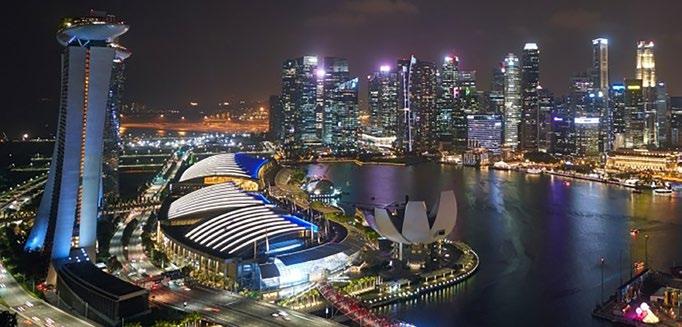

MBA competes with specialised postgrad programmes through AI

Master of Business Administration (MBA) providers are facing increased competition with specialised postgraduate programmes and online courses. From 2020 to 2021, the trend was online MBA; and in 2022, providers were challenged to integrate specialised courses and AI to hone the future business leaders.
 VCs and entrepreneurs 'stand-off' pushes funding volumes down
New bill slashes transaction costs for Hong Kong market makers
VCs and entrepreneurs 'stand-off' pushes funding volumes down
New bill slashes transaction costs for Hong Kong market makers
& EDUCATION
MARKETS & INVESTING HOTTEST
2023 MARKETS INFORMATION TECHNOLOGY INTERVIEW HR




SG vs HK: Where should MNCs
establish their APAC headquarters?
Hong Kong SAR and Singapore are both attractive locations for multinational corporations seeking to establish a headquarters in the Asia-Pacific (APAC) region, but when looking at several factors, one market is better than the other.
According to a report by CBRE, Singapore won over Hong Kong in terms of the the technology industry scale.
“Singapore invests more in research and development (R&D) and leads in high-tech manufacturing,” Marcos Chan, head of research at CBRE Hong Kong, said.
The real estate expert, however, underscored that Hong Kong is catching up by deepening collaboration with Shenzhen and the Greater Bay Area.
In terms of ESG and green building initiatives, Singapore also has the upper hand.

“Singapore’s green building adoption rate is much higher than that in Hong Kong SAR,” according to Chan.
For Hong Kong to reduce its carbon intensity, CBRE said the city can leverage the mainland’s new energy industry growth. Meanwhile, office availability and the scale of the financial industry are areas where Hong Kong wins over Singapore.
“Hong Kong SAR is the leader in terms of fundraising, RMB deposits, and wealth management,” Chan said.
The expert, however, noted that Singapore’s forex business is bigger than Hong Kong, but both markets are seeing growth in private wealth management.
Chan added that Hong Kong is “wellpositioned to become the largest private wealth management centre.”
“Its proximity and strong ties with mainland China will make it the leading global offshore RMB business hub. The financial services sector will continue to be one of Hong Kong’s key economic pillars. The return of mainland Chinese firms will encourage more IPOs and related financial activities. The sector currently plays an important role in the office market, accounting for 25% of all new leasing activities in the past 15 months,” Chan commented.
On office vacancy, CBRE said Hong Kong SAR “currently stands at the highest on record with substantial new supply in the pipeline over the next four years.”
Total office stock in Singapore is only 73% of that in Hong Kong SAR, giving corporate occupiers more options and flexibility when choosing an office location in the latter market. Between 2023-2026, Hong Kong SAR will see
the addition of 10% of its existing stock, whilst Singapore will welcome the completion of 7% of its existing office supply.
On areas of talent availability and attraction, office rents and prices, and influence on Asia Pacific, CBRE said both markers are tied.
“Hong Kong SAR and Singapore play complementary roles. Hong Kong SAR is more convenient for running China and North Asia operations, whilst Singapore is more suited to Southeast Asia and India,” CBRE said.
In terms of financial talent, CBRE said Hong Kong has a wider pool, whilst Singapore has more science and technology workers.
Meanwhile, CBRE said the pricing and rental gap between the two cities’ CBD offices is also narrowing.
Whilst Singapore’s CBD is cheaper, Hong Kong offers more cost-effective decentralised nodes.
“Hong Kong SAR’s residential rents posted the largest decline in a decade in 2022, and those in Singapore have escalated sharply over the past three years, which could soon surpass those in Hong Kong SAR decentralised districts in Kowloon and New Territories,” CBRE said.
“With the enhanced transport connectivity within Hong Kong and in the Greater Bay Area under the ‘one-hour living circle’, and more affordable residential units than Singapore, Hong Kong is appealing to highcalibre talent from overseas markets. This is important for multinational companies when deciding on the locations of their headquarters in the region,” CBRE added.
On rents, CBRE said Hong Kong will remain weak in the medium term given that it is a tenants’ market, whilst Singapore has recovered since it is a landlords’ market.
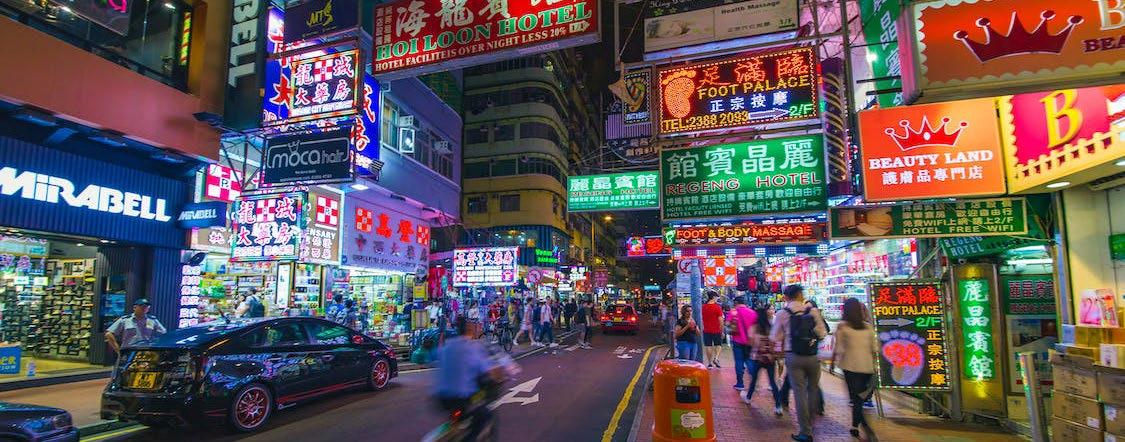
“Despite a steady recovery in leasing momentum, Hong Kong SAR office rents are still below pre-pandemic levels and are expected to decline further before 2024,” according to CBRE.
Data from CBRE showed that as of Q4 2022, Hong Kong SAR Central’s Grade A rents remain the highest globally, about 40% higher than those in Singapore’s core CBD; however, Hong Kong SAR offers more affordable office space in decentralised areas such as Hong Kong East and Kowloon East, where Grade A rents are up to 75% lower than in the Central CBD and below those in Singapore’s decentralised locations.
6 HONG KONG BUSINESS | Q3 2023 FIRST
HK SAR and SG are both attractive locations for multinational corporations (Photo by Jimmy Chan and Martin Hungerbühler from Pexels)
HK SAR and SG play complementary roles. HK SAR is more convenient for running China and North Asia operations, whilst SG is more suited to SEA and India
COMMERCIAL PROPERTY


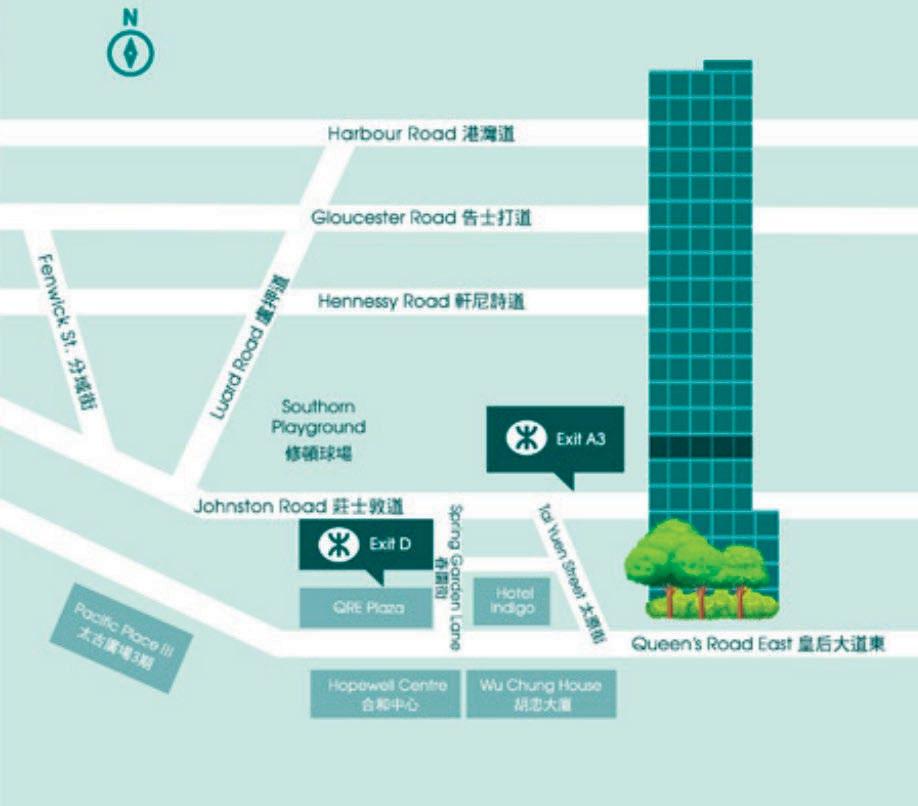

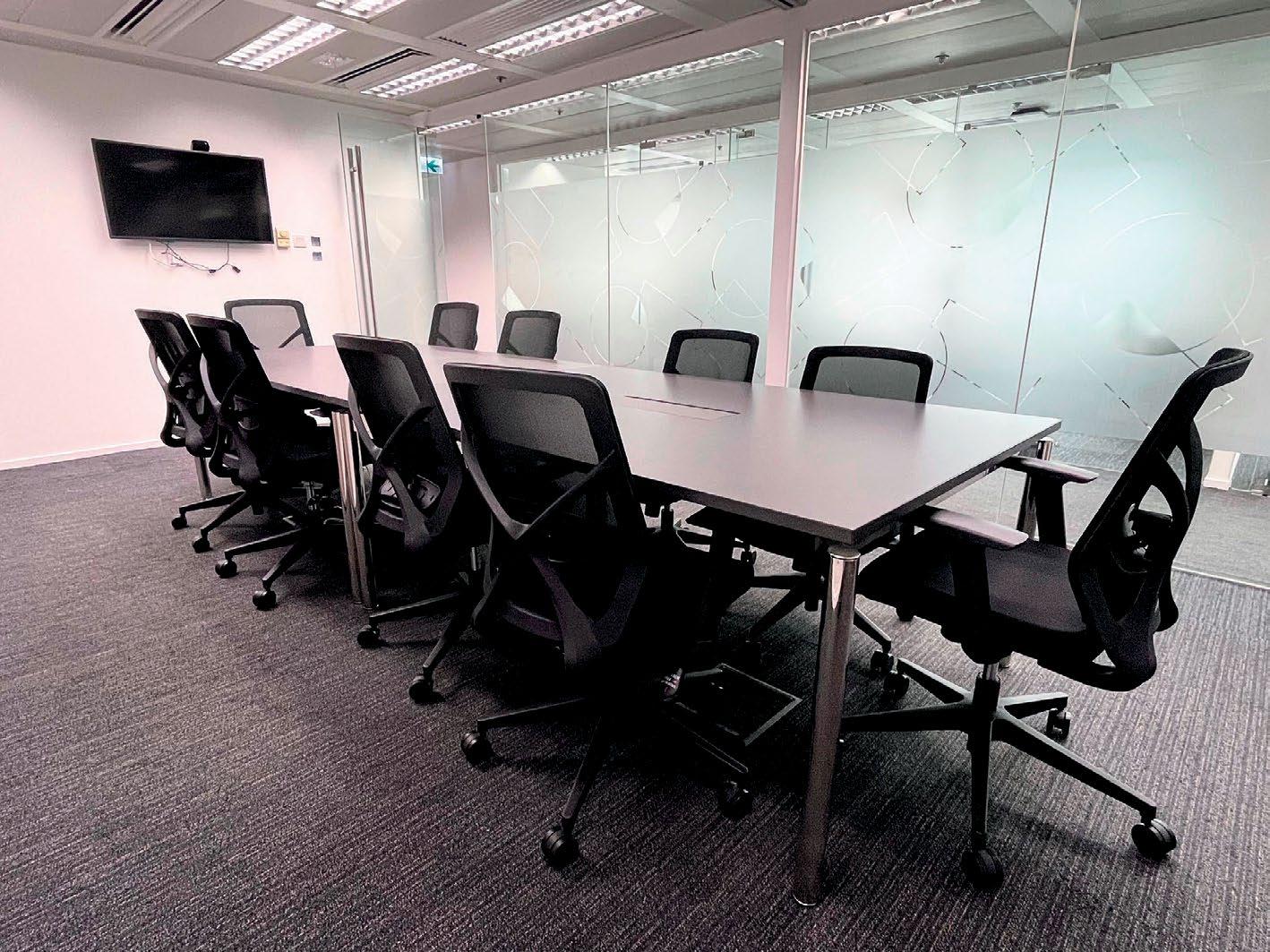

Sales hotline sales@thedesk.com.hk
3-month FREE Offer* 39/F Dah Sing Financial Centre, 248 Queen’s Road East, Wan Chai Private Office | hotDesk | Meeting Room Total floor area 11,000 sq.ft. Private office ranged from 2 – 30 pax 852 9544 3045 *Limited time offer. Terms & conditions apply
theDesk Wan Chai
4 WAYS TO UNLOCK
E-COMMERCE POTENTIAL
IN HK
Nick Chiu, SHOPLINE HK General manager
E-commerce enabler, SHOPLINE, identified four key trends in Hong Kong’s online retail market in the post-pandemic era that can better prepare merchants to unlock the potential of e-commerce.

In its whitepaper, SHOPLINE said the omnichannel commerce ecosystem will continue to grow.
Merchants, therefore, will have to accelerate in transforming their businesses to an Online-merge-offline (OMO) business model to allow shoppers to discover, select, pay, and collect in the mode they prefer, from the online store to brick-and-mortar touch points, as well as Facebook / Instagram pages and WhatsApp communications.
Apart from an OMO model, the platform said that chat commerce is also on the rise, indicating importance of communication between merchants and customers through Facebook, Instagram, and WhatsApp.
Merchants said more than seven in ten of their customers (72%) use WhatsApp to contact them.
In terms of the devices shoppers use to purchase online, SHOPLINE said smartphones remain king.
SHOPLINE said 59.5% of orders in 2022 were made through smartphones, so the platform believes branded mobile apps will become essential for merchants.
“Over three-fourths of the surveyed merchants recognised the benefits of launching a branded app, including it becoming a trend in the market (74.9%), encouraging repeat purchases (78.9%), as well as building trust in the brands (76.8%),” the platform reported.
SHOPLINE also emphasised the benefits of using artificial intelligence (AI) and machine learning in business operations.
The whitepaper stated that integration of AI technologies enable automated analytics of customers' firstparty data to optimise sales tactics.
Retail market rebounds as tourists return
ECONOMY
The city’s retail market is set for rebound in 2023 thanks to the return of tourists, particularly from the Mainland.
Data from CBRE’s “Hong Kong Retail Recovery: Opportunities and Challenges” report showed that an average of 86,600 inbound tourists arrived daily in Hong Kong between March 19 to 25. Of these, 81% are from Mainland.
Tourist volumes grew exponentially since the start of the year, the majority of which are from mainland China, CBRE Hong Kong revealed. In a research conducted by CBRE Hong Kong titled Hong Kong Viewpoint – Hong Kong Retail Recovery: Opportunities and Challenges, results showed an average of 86,600 inbound tourists arrived daily in Hong Kong. Of these, 81% are from the Mainland.
To recall, Mainland tourists accounted for 30% of the city’s retail sales before the pandemic.
“Tourists are expected to return in greater numbers over the course of this year, driving growth of tourist-oriented trades,” Marcos Chan, head of research at CBRE Hong Kong, said.

“The beginning of 2023 marked a return to normalcy as cross-border travel resumed and all restrictions
in Hong Kong related to COVID-19 were lifted. The resulting increase in economic and business activity, coupled with Hong Kong’s inherent strength means the city’s retail market is now poised to make a comeback,” Chan explained.
The expert, however, underscored that the pace of the recovery of the retail market will still depend on “how recent financial market turbulence and ongoing geopolitical tension impacts the global economy.”
Meanwhile, the study also underscored that Hong Kong is a “gateway” destination for mainland tourists. Noting that there are about 86 million people residing in the Greater Bay Area (GBA), the travel for mainlanders only takes about two hours to arrive in Hong Kong.
“Whilst local consumption has proven to be a resilient, sustainable driver of retail sales amid market headwinds, the return of mainland tourists will fuel the growth of the retail market, particularly touristoriented retailers, such as luxury brands, medicines, cosmetics, and beauty,” Chan said.
The proportion of inbound mainland tourists consists of 80% of the total, nearing the pre-pandemic years of 2017 to 2019.
For total retail sales, the six-month moving average of Hong Kong in January 2023 was 25% under the first quarter of 2019’s peak. Meanwhile, private consumption expenditure stood just 2% below the level before the turn of the market in mid-2019, the report said.

Some hurdles that challenge Hong Kong’s competitive advantage are the growing presence of luxury brands on the mainland, similar nearby tourist destinations that are also gaining traction, and the easing of restrictions on international travel.
“With rents in prime shopping areas and high streets approximately 40% below the mid-2019 peak, leasing costs will climb in the next 12 to 24 months due to reduced vacancy and increasing leading demand. Beyond the traditional core districts, retailers could also explore other tourist hotspots such as West Kowloon and waterfront promenades alongside Victoria Harbour, as well as emerging office clusters,” said Lawrence Wan, Senior Director of Advisory and Transaction Services – Retail CBRE Hong Kong.
8 HONG KONG BUSINESS | Q3 2023 FIRST
The return of mainland tourists will fuel the growth of the retail market, particularly tourist-oriented retailers
(Photo from CBRE Hong Kong)
Leasing costs will climb in the next 12 to 24 months due to reduced vacancy and increasing leading demand
Marcos Chan
RETAIL
Faster recovery awaits Hong Kong’s high-end hotels
Hong Kong’s high-end hotels will likely rebound and achieve faster growth this year, according to JLL.
Based on the report, hotel transaction activity will pick up in Q4 and will likely reach US$1b.
JLL also expects the Revenue Per Available Room (RevPAR) of high-end hotels to rebound to preCOVID levels in 2024.
In February 2023, the RevPAR of High Tariff A hotels jumped 161% year-on-year to US$160.55, which JLL said is the strongest growth amongst all hotel segments.
“We expect RevPAR to rebound to 2018 levels during 2024, driven by the rebound of tourism with the lifting of border restrictions to inbound travellers. We expect pentup demand from mainland China to be significant and on average higher spending than pre-pandemic, favouring the full-service and luxury segments. This rate-led recovery is in line with other Asian gateway markets which have reopened,” Xander Nijnens, head of Hotel Advisory and Asset Management at JLL in Asia Pacific, said. Unlike high-end hotels, some of
The hotel capital market is expected to pick up towards the end of 2023, reaching US$1b for the full year.
the budget and midscale hotels will take longer to recover, given that they have a “large proportion of long-stay guests.”
“They would have to wait for those leases to expire before being able to welcome short-stay guests… Similarly, it is going to take a prolonged period for inbound airlift into Hong Kong to be fully reinstated, and this will put a brake on the recovery,” Nijnens said.
Historically, Hong Kong has been a well sought-after hotel investment market, with an average hotel transaction volume of US$1b between 2007 and 2022. Between 2020 and 2022, during the pandemic, the hotel transactions in the city dropped significantly to an average of US$500m.
JLL, however, underscored that the improving hospitality sector is expected to attract investors back to the hotel market.
“The hotel capital market is expected to pick up towards the end of 2023, reaching US$1b for the full year. Investors will likely continue to acquire hotels with smaller rooms with conversion opportunities,” Jonathan Law, vice president of Investment Sales at JLL in Hong Kong and Asia Pacific, said.

At the end of 2022, Hong Kong counted 89,466 hotel rooms with the future supply expected to remain limited over the next four to five years despite an anticipated return of tourists.
SHAREHOLDER SUPPORT IS KEY FOR HK VIRTUAL BANKS TO WEATHER FAILURE RISKS
Continuous shareholder support should help Hong Kong’s virtual banks weather initial losses on the path to growing their business, says Fitch Ratings.
Six out of eight virtual banks in Hong Kong reported narrower losses in 2022 amidst a moderation in operating cost growth and expansion in higher-yielding lending, the ratings agency noted.
However, as they stand, the nascent banks remain vulnerable to higher failure risks than traditional banks due to a limited record in terms of customer loyalty, economies of scale, and risk management.
“Virtual banks are more reliant on costlier deposits than traditional peers due to their nascent franchises,” said Savio Fan, associate director at Fitch (Hong Kong Limited).
“These higher funding costs drive virtual
banks’ risk appetite, evident from their lending to higher-risk segments, such as SMEs and unsecured borrowers, and investing in higheryielding corporate debt securities,” Fan added.
Investment securities and corporate debt accounted for 36% of virtual banks’ total assets on average as of end-2022.

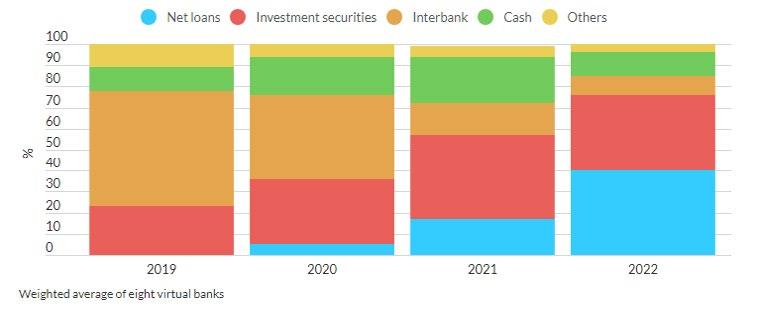
Their loans to higher-risk borrowers expose them to potentially higher credit costs in an economic downturn. This also renders them more susceptible to potential market confidence issues in the event of stress, especially since their depositor loyalty is unproven and easy transfers make the deposit base vulnerable to flight risk, Fan warned.
Senior Director at Fitch Wire, Lan Wang, said continued support from the shareholders remains critical to the business growth, and helps mitigate higher risks.
Hong Kong Virtual Banks' Asset Mix
Source: Fitch Ratings, HKMA, banks
HONG KONG BUSINESS | Q3 2023 9 FIRST
Xander Nijnens
COMMERCIAL PROPERTY Hong Kong hotel investment volume Source: JLL
CHALLENGES FOR HK AIR TRAVEL AMIDST RECOVERY BY 2024 AVIATION

Hong Kong’s removal of its travel restrictions, and mainland China’s reopening of its borders in January, would drive the city’s strong rebound in its air traffic, says Fitch Ratings.
Recent traffic data at the Hong Kong International Airport (HKIA) showed that the city’s passenger volume surged to the 3.1 million mark in April, recovering 54% of its 2019 level. The statistic was 25 times the same as last year.
The rating agency also said that Hong Kong is ready for the pentup travel demands, as routes are beginning to resume gradually and traffic to revive despite economic headwinds and geopolitical tensions.
Short-haul routes led the recovery, with faster growth and traffic to and from Southeast Asia, mainland China, and Japan. Near-term optimism from tourists will become high for the upcoming summer travel season.
“The ‘Hello Hong Kong’ promotional campaign with air ticket giveaways and welcome packs launched by the government should further entice worldwide visitors and boost enthusiasm for travel,” Zoey Wang, director, Fitch (Hong Kong Limited) said.

However, the rating agency said that several challenges remained to hinder Hong Kong’s growth prospects and its pace of recovery.
The city, along with others in the Asia-Pacific Region, had a slow air traffic recovery from the pandemic due to delayed border-opening policies, whilst the concentration on international routes made its aviation industry more vulnerable to travel restrictions.
Other risks like labour shortages, routes yet to resume fully, soaring inflation, and higher airfares may threaten HKIA's near-term plans.
But, Sunny Huang, director at Fitch (HK Limited) still expects growth in air travel "to spill over in medium term."
Ageing HK demands more senior facilities
RESIDENTIAL PROPERTY
Real estate expert, JLL, has called on the Hong Kong government to encourage more developers to build more senior living places in the city.
The call came in light of the expected increase of the city's older population by 46.3% in the next decade.
In a report, JLL warned that the city will face a shortage of over 60,000 suitable elderly places by 2032
"The number of residential care places for the elderly is scheduled to increase by 0.24% only. At the same time, our elderly population has never been healthier or wealthier, and the way our parents and grandparents want to live is very different from the way their parents and grandparents lived," JLL said.
"With a projected senior population of 2.2 million by 2032, we also consider that Hong Kong needs to find an alternative to residential care homes which may be more suitable for our growing senior population," JLL added.
By 2050, Hong Kong is also expected to have the highest global share of people aged 60 or above by 2050 at
over 40% of the population
"With our elderly population forecast to grow by half a million over the next decade, it is critical to have enough suitable accommodation in the city and the mainland cities in Greater Bay Area (GBA) to defuse the problem," JLL stated.
Currently, options for the elderly in Hong Kong are mostly limited to living with their families and Residential Care Homes for the Elderly (RCHE) which provide 74,200 care places providing crucial services and care to elderly residents. These facilities, however, can be basic and offer limited privacy and independence to residents.

“We expect that there are more elderly residents with greater wealth who wish to continue to live independent and active lifestyles in retirement. Therefore, the government should consider dedicating land specifically for elderly home use, encourage public-private partnerships to unlock this sector and offer incentives to speed up development. The Northern Metropolis presents a particularly good opportunity to set aside land for this very purpose and this could help to ease some of the burden that the government will face with this population time bomb," Wendy Chan, GBA Growth Director of Value and Risk Advisory at JLL in Greater China, said.
JLL proposed that government build luxury-style residential apartments within a complex that also offers nursing, medical, entertainment and service facilities to residents.
"The development could be similar to co-living or serviced apartments with on-site medical and nursing care, and the facilities can be self-contained communities, with access to dentists, medical care, restaurants, cafes, gyms and cinemas. Such would provide the residents with both independence and an aspirational lifestyle with highquality accommodation and several services at hand to make their lives more convenient," JLL said.
"At the same time, by providing more suitable elderly accommodation, more conventional flats would be released to the market after increasing elderlies move into these new projects, which could also help to alleviate some of the existing housing shortages," JLL added.
10 HONG KONG BUSINESS | Q3 2023 FIRST
The city's older population is expected to increase by 46.3% in the next decade (Photo by Jimmy Chan from Pexels)
More conventional flats would be released to the market after increasing elderlies move into these new projects
Wendy Chan
HK is ready for the pent-up travel demands (Photo from HKIA)
Why are residential prices in Hong Kong losing growth momentum?
The decreasing birth rate and marriages in Hong Kong, alongside interest rate hikes, will affect the growth momentum of residential prices in the near term, according to JLL.
Based on JLL’s latest Residential Market Monitor, the city’s population has fallen by 187,000 in the past three years and the number of new births is also on a downward trend.
“In 2020-2022, the average number of marriages registered per year was 28,248, 41.8% lower than the average of 48,556 in 2017-2019. The total fertility rate or the live births per 1,000 women decreased from
1,128 in 2017 to 772 in 2021, below those in Japan and Singapore,” said Norry Lee, Senior Director of Projects Strategy and Consultancy Department at JLL in Hong Kong.
With fewer new births and home formation, there will also be less starter home demand and upgrade demand, added Lee.
Apart from the low birth rate, interest rate hikes are also affecting rental growth momentum in Hong Kong.
JLL said changes in economic reality have “become less conducive” for mainland Chinese buyers to enter the market.
The expert underscored that buyers from
the mainland accounted for over 15% of the residential transaction volume in 2017.
“Mainland Chinese investors attracted by Hong Kong’s lower borrowing costs and higher rental yields are finding these factors less appealing than before, and while the average mortgage rate in Hong Kong rose by 213 bps to 3.58% in 2022, the nationwide average mortgage rate in mainland China dropped to a record low of 4.26%,” Cathie Chung, Senior Director of Research at JLL in Hong Kong, said.
“In addition, the rental yield of Class A property in Hong Kong narrowed from 2.8% in 2017 to 2.5% in 2022. Furthermore, non-local end users settling in Hong Kong face more difficulties in buying homes than local buyers because they need to prepare a much higher upfront payment than local buyers for the same property, due to higher stamp duties and the lower maximum LTV ratio allowed,” Chung added.

Chung underscored that whilst the rate hike cycle has ended, “mortgage rates are likely to stay elevated, which is not conducive for demand growth.”
“Although the economic recovery will eventually translate into higher income and greater affordability to support home prices, that process could be gradual,” she said.
What could help Hong Kong attract nonlocal investors and family offices would be new policy measures, including a revamped investment-immigration scheme and tax incentives, like launching the Top Talent Pass Scheme in December 2022, and raising the Additional Buyer's Stamp Duty in April.
HONG KONG’S CARD PAYMENTS MARKET TO GROW 4.8% IN 2023

Growing preference for electronic payments and the city’s economy rebounding are expected to carry Hong Kong’s card payments to a 4.8% growth in 2023.
In a report, data and analytics company GlobalData said that the value of card payments in the city will reach HK$1.06b ($136b) by end 2023, growing faster than the 3.2% growth reported in 2022.
“The convenience of electronic payments, well-developed payment infrastructure, a growing preference for contactless, and e-commerce payments are all facilitating increased payment card usage in Hong Kong,” said Ravi Sharma, lead banking and payments analyst, GlobalData.
Credit and charge cards are the preferred payment cards, accounting for 71.7% of card payments value in 2022. This is mainly due to the associated reward programs, said Sharma, which makes it more beneficial than
debit cards for consumers.
Credit cards also have wider acceptance among merchants, while debit cards are not that popular, Sharma added. Debit cards accounted for the remaining 28.3% share of card payments in 2022. The key reason for low debit card usage is the limited acceptance of domestic EPS debit cards. These cards can only be used for offline payments in the country.
E-commerce growth is also anticipated to support Hong Kong’s payment card market. According to GlobalData’s 2022 Financial Services Consumer Survey, credit cards are the most preferred payment method for e-commerce payments accounting for over one-third of total online purchases.
GlobalData’s 2022 Financial Services Consumer Survey was carried out in Q2 2022. Approximately 50,000 respondents aged 18+ were surveyed across 40 countries.
Source: GlobalData Banking and Payments Intelligence Center
HONG KONG BUSINESS | Q3 2023 11 FIRST
RESIDENTIAL PROPERTY
With fewer new births and home formation, there will also be less starter home demand and upgrade demand, Nory Lee (Photo by Aleksandar Pasaric from Pexels)
Hong Kong: Card Payments Value (HKD billion), 2019-27f
Designed for you: How Mannings’ face masks were redesigned for public safety
The onset of the COVID-19 pandemic saw the supply scarcity of medical equipment such as face masks. Worse, people came into a frenzy and face masks instantly became inaccessible to the masses. This has led not just to the need to produce supplies at a much quicker rate, but also to the rise of positive cases from the virus.
Mannings, as one of Hong Kong’s leading and trusted health and beauty products chain stores, embarked on a mission to support the community in times of need aligned with its company’s core values. Its face mask products were identified as a strategic opportunity to be redesigned and relaunched to meet customers’ changing needs and expectations in staying protected.

The Mannings 3-Ply Protection Face Masks were redeveloped in September 2021 after its initial launch in 2020. This relaunch aimed to serve a wider goal to protect the Hong Kong community. It offers a credible assortment from core to new products. The range has been extended from adults to kids.
“We are agile to ensure that new trends and changing customer dynamics are taken into consideration to continuously develop



relevant products for our customers,” the company said.

The product is manufactured in an ISO 13485 factory. It has fluid-resistant materials and a high-quality filter; it has also been tested against skin irritation, sensitisation, and cytotoxicity. Moreover, the masks have breathable material that meets the international standard quality of safety and efficacy.
It has also passed the highest standard of ASTM, which is amongst the most wellrecognised mask test standards or quality credentials in Hong Kong. Mannings 3-Ply Protection face masks featured additional testing that required additional time and investment to ensure the products pass the toxicology test on product safety for longhour wearing.
Engaging customers with quality initiatives With











such features and specifications,

the 3-Ply Protection face masks led sales, volume and profit within the face mask category. Moreover, the product and assortment transformation plan of Mannings was designed to focus on improved quality and a wider assortment of choices for customers.

New initiatives were also launched to educate and engage customers. These included new mask fixtures with prominent customer navigation to help them make their choice.
Mannings’ efforts to educate people on the benefits of using 3-Ply face masks and the quality of its product have been recognised by the Made in Hong Kong Awards 2022, with the company winning in the Healthcare category.
The prestigious awards programme recognises exceptional products that are proudly manufactured and designed in Hong Kong.





12 HONG KONG BUSINESS | Q3 2023
Its 3-Ply Protection face masks have fluid-resistant materials and high-quality filters.
We are agile to ensure that new trends and changing customer dynamics are taken into consideration to continuously develop relevant products for our customers
HEALTHCARE
Mannings Plus




















































































HONG KONG BUSINESS | Q3 2023 13
Hong Kong leaps into digital sick leave verification
Experts advise employers to ensure proper data storage in response to the development.
In Hong Kong, employees are only allowed a limited period to turn in a sick leave certificate, some as short as three days, which is why many have welcomed the Hospital Authority’s (HA) move to digitise their medical certificates.
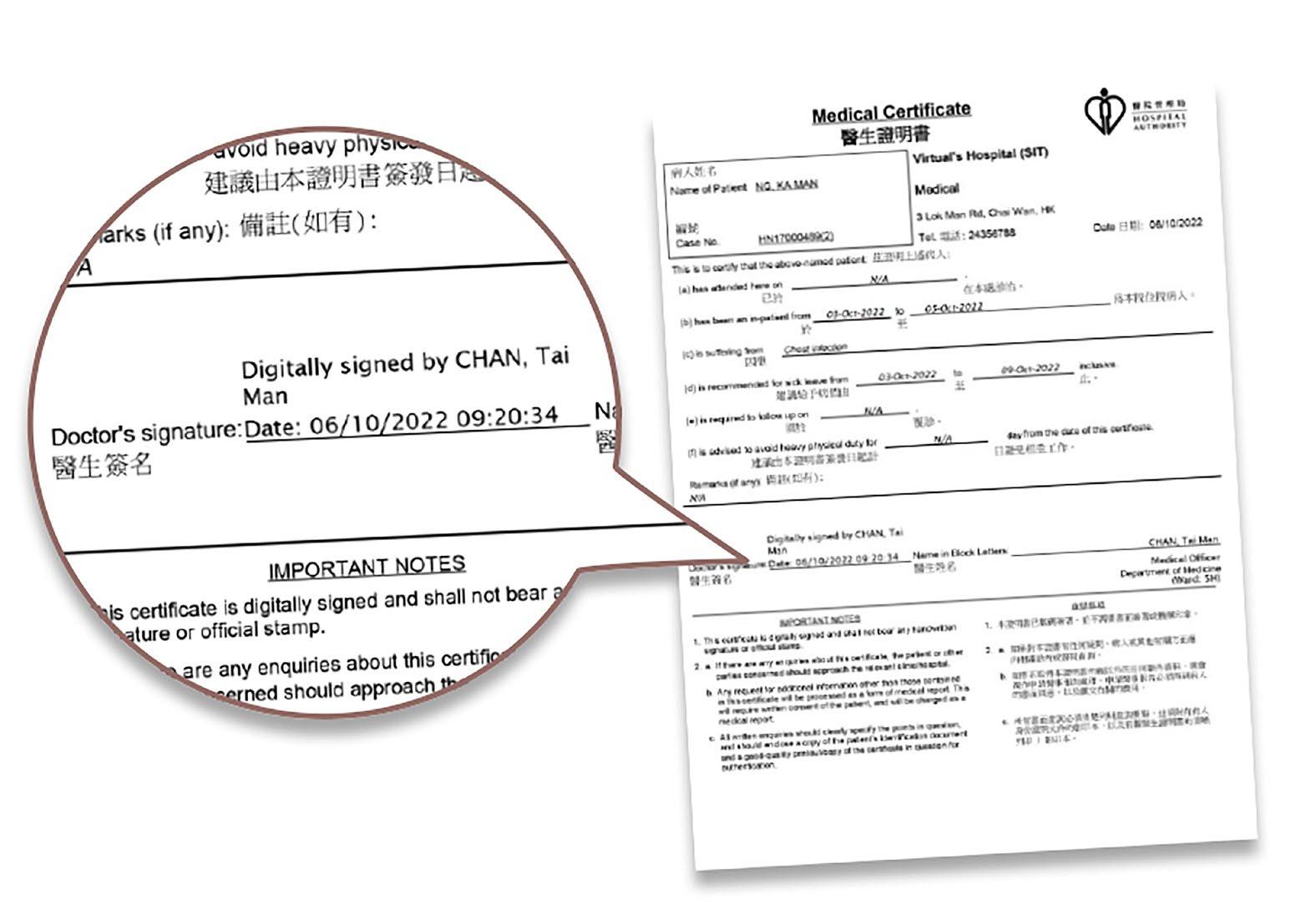
With HA’s introduction of the e-sick leave certificate, employers need not wait for their employees’ medical certificate via mail or courier and can access it through a QR code.
The e-sick leave certificates will also cut the time HR experts dedicate to verifying the medical document, said Casper Fung, senior consultant at PERSOLKELLY.
Andrea Randall, a partner at RPC Hong Kong law firm who specialises in employment, said that HA’s e-sick certificates allows employers to ensure that their employees’ sick leave records are kept up to date.


“This is a useful development; a paper ticket is subject to theft and loss, but with the HA e-sick certificates, employees can access their certificates electronically anywhere, anytime and share it with their employers
This is a useful development; a paper ticket is subject to theft and loss
immediately,” Randall said. Under Hong Kong’s employee ordinance, employers are required to “maintain clear and updated records of their employees’ sickness days.”
“In the future, if an employee is granted sick leave after a teleconsultation by the HA, he/she will receive an electronic medical certificate remotely and will not need to return to the hospital or clinic to obtain the paper certificate,” added Randall.
Employers’ responsibility
With the digitisation of sick leave certificates, Randall said employers must take steps to safeguard and protect the privacy, security, and confidentiality of their employees’ personal details.
“Employers should ensure proper storage and access to these e-sick certificates, and ensure that such is done so in accordance with the Personal Data (Privacy) Ordinance,” the legal expert said.
“Whilst there is no statutory provision regarding the retention of
electronic health data specifically, the Code of Practice on Human Resource Management (COP) has set out some guidance regarding the collection, sharing, use, and safekeeping of their employees’ health data,” she added.
According to the COP, employers should put in place an in-house policy to restrict access to, and processing of, personal data of employees on a “need-to-know” and “need-to-use” basis.
This means that data collected from the e-sick leaves must be limited to relevant departments such as the HR or those related to salary calculation, said Fung.
Apart from requirements set by the COP, Fung advised employers to update their employee handbook.
“We suggest that the employer mention that they have the right to verify the e-certificate, and that the employee’s sick leave application will only be confirmed after all the verification is done,” the expert said.
Similar to what the COP states, Fung also recommended that employers provide appropriate training for all their employees on how to handle personal data.
Accessing e-sick leaves
Employers who wish to verify the authenticity of their employees’ e-sick leave certificate may do so by scanning the QR code in the document. Employers will then have to input their employee’s name and their sick leave date.
“Employers do not have to install additional tools or software to access the HA e-sick certificate,” Randall clarified.
Employees, on the other hand, can access their e-sick certificate through the HA mobile application called HA Go, under the “MyHealth” feature. The certificate will be stored in the “MyRecord” section of the app.
The HA also issues the e-sick certificate electronically and in paper form. “If a patient requires it, the HA will continue to print paper sick leave certificates,” Randall said. “It follows that employers can expect to receive both paper sick leave certificates as well as HA e-sick leave certificates for the time being,” she added.
To read the full story, go to https:// hongkongbusiness.hk/
14 HONG KONG BUSINESS | Q3 2023
Employees can access the HA e-sick certificates anywhere, anytime and share them with their employers immediately (Photo from HA.org.hk)
HR BRIEFING
Andrea Randall
Casper Fung


HONG KONG BUSINESS | Q3 2023 15
LEGAL BRIEFING
Government shields Hong Kong’s local MNEs from EU’s tax defensive measures
It introduces the foreign source income exemption regime to benefit local MNEs if certain requirements are met.
Before 2023, multinational enterprises (MNEs) in Hong Kong did not need to prove their economic presence in the city to receive tax exemption for their offshore passive income. This setup has landed Hong Kong in the European Union’s “watchlist” of markets with risks of double non-taxation. To remove the city from the watchlist, and prevent it from landing on the “blacklist,” the government introduced changes to its foreign source income exemption (FSIE) regime.
“If Hong Kong fails to comply with the EU’s request, it would be listed on the blacklist and Hong Kong-based enterprises would be subject to tax-related defensive measures imposed by the EU member states. These measures include denial of deduction of costs, higher withholding tax rate, reinforced monitoring of certain transactions, and higher audit risks for taxpayers,” Wei Kang, partner at Stephenson Harwood’s Greater China Private Wealth Team, told Hong Kong Business
The refinement of Hong Kong’s FSIE regime will also uphold the city’s competitiveness.
“The FSIE regime is only applicable to certain types of specified income received by MNE entities in Hong Kong, with certain exclusions available to certain types of entities. Furthermore, the specified income remains non-taxable provided that the relevant exception requirement is met, such as the economic substance (ES) requirement,” PwC Hong Kong tax partner, Agnes Wong, told Hong Kong Business.

“In other words, in-scope taxpayers that already have business substance in Hong Kong should have no difficulties in meeting the ES requirement under the FSIE regime and they will not be impacted by the implementation of the bill,” she added.
The exemptions
Under the refined FSIE regime, interest, dividend, disposal gain from sale of equity interests in an entity and intellectual property income arising in or derived from a territory outside Hong Kong and received in the city are subject to tax.
Regulated financial entities which derive interest, dividend or disposal gain from its business as a regulated financial entity, however, are exempt from the rule. The foreign-sourced income received from Hong Kong by MNEs, however, will not be deemed chargeable to tax if they meet exception requirements for the particular type of income, Kang explained. For interests to be exempt from tax, MNEs must meet the FSIE’s ES requirement.
“The latest international tax standards require a taxpayer benefiting from a preferential tax treatment in a jurisdiction to have substantial economic presence in the jurisdiction and to establish an explicit link between the relevant income and real activities in the jurisdiction,” Wong said.

“Such requirements generally entail a taxpayer having an adequate number of employees and incurring
an adequate amount of expenditure to undertake the relevant core income generating activities,” she added.
The ES requirement, or participation requirement, can also exempt dividends and equity disposal gains from tax. Meanwhile, MNEs must meet the nexus requirement to exempt their IP income from tax.
Impact on MNEs
The new FSIE regime will likely only have minimal impacts on MNEs with business substance in Hong Kong, said Wong.
Those who do not meet the ES requirement or the other conditions needed to be exempt can still look at other avenues to achieve tax neutrality like the enhanced tax credit mechanism.
“Under the mechanism, any foreign tax paid by a Hong Kong resident on the specified foreign-sourced income that is chargeable to profits tax under FSIE is eligible for a bilateral or unilateral tax credit against the profits tax payable on the same income, subject to the amount of the profits tax payable in respect of the income in Hong Kong,” Wong said.
To read the full story, go to https:// hongkongbusiness.hk/

16 HONG KONG BUSINESS | Q3 2023
FSIE will likely only have minimal impacts on MNEs with business substance in Hong Kong
If Hong Kong fails to comply with the EU’s request, it would be [blacklisted]
Agnes Wong
Wei Kang




WINNER BEST HOME THEATER
Smart strategies with micro-influencers ensure brand growth in 2023
Businesses confirm ‘micro is mighty’ as brands make US$5.78 per US$1 spent on influencer marketing.
Micro-influencers have been a favourite of brands and rightfully so, given that they cost less, but receive higher engagement rates. E-commerce platform, Shopify, reported that 2023 is the year when brands tap more influencers with around 10,000 to 100,000 followers.
For brands to ensure growth when working with this new generation of marketing partners, marketing experts said they need to follow five rules, beginning with choosing the right micro-influencers.

In choosing who to work with, Monica Hon, deputy head of Influencer Marketing of AnyMind Group Hong Kong, said it is important for brands to select those who align with their image and values. Hon said it is also important to look at the engagement rates of the micro-influencer and check if it is “stable and satisfactory.”

Jude Khu, regional social media lead for Intrepid Group Asia, expressed the same sentiment. She advised brands to look for micro-influencers who maintain an “engaged and active following.”

Latest data from Spiralytics show that micro-influencers have an average engagement rate of 3.86% on Instagram, 1.64% on YouTube, and 17.96% on TikTok.
But apart from their having an engaged audience, microinfluencers considered for marketing brands must also be capable of producing quality content. “[Brands have to check] whether the influencer’s skills can fulfill campaign requirements, such as their photo-taking skills/makeup skills or styling skills,” Hon stressed.
Check cost
Next consideration which Hon and Khu agree on is cost and affordability. “Micro-influencers may have lower rates than macroinfluencers or celebrities, but brands should still consider their budget when choosing which influencers to work with,” Khu said
[Brands have to check] whether the influencer’s skills can fulfill campaign requirements
Based on experience, Khu said the rate of micro-influencers in Southeast Asia (SEA) ranges between HK$1,500 and HK$3,000 for photo content, depending on the campaign brief and complexity. In Asia-Pacific, microinfluencers receive a similar range in US dollars at US$200-US$250 per photo post, said Hon.
Other factors which brands should check when working with microinfluencers are their location, as well as their flexibility and attitude.
“Brands should consider working with micro-influencers who are based in the same geographic region as their target audience to ensure localised relevance and cultural context,” Khu said.
“[Brands need to check] whether the micro-influencers are willing to work with the brand in the long run and open to promoting the brand on a continuous basis, instead of a oneoff collaboration,” added Hon.
To ensure micro-influencers promote a brand in the long run, businesses must cultivate strong relationships with them.
Brands can do this by “communicating clearly and regularly about your expectations, campaign goals, and vision.
Establishing good communication with the influencer is essential to have stable and sustained collaborations. So companies should schedule regular meetings or video conference calls with the influencers they’re working with,” said Khu. Likewise, Hon shared her experience on how talents “prefer clear guidance for photo-taking or video shooting.”
“Communicate the campaign brief and requirements as clearly as possible to talent but also give some flexibility for talent to create their content in order to make sure the content is authentic and fits their fans’ expectation,” Hon said.
Setting clear expectations and providing clear guidelines for a collaboration will also help brands make the most out of their partnership. It is also important for brands to acknowledge the contributions that their microinfluencers make.
To make them feel valued, Hon said brands can consider inviting micro-influencers to annual events or frequently send newly launched products to them.
To read the full story, go to https:// hongkongbusiness.hk/
18 HONG KONG BUSINESS | Q3 2023
MARKETING BRIEFING
Micro-influencers considered for marketing brands must be capable of producing quality content
Jude Khu
Monica Hon
Manulife drives digital adoption in the MPF industry with its pioneering online
Its MPFTransferSimple.hk website was recognised at the HKB Technology Excellence Awards.
As the largest mandatory provident fund (MPF) scheme sponsor in Hong Kong1, Manulife has already started to transform the digital experience for its customers as well as intermediaries for quite some time.
Manulife is keen on continuously driving the MPF industry on digital take-up as it can see that more customers are starting to prefer using digital platforms for all kinds of transactions. It is expected to continue investing in digital experiences for customers, leveraging the latest technologies.
In this regard, Manulife has introduced the “MPFTransferSimple.hk” website for its intermediaries to provide a simple, flexible, and straight-through processing digital journey for its customers to onboard and/ or transfer to Manulife’s designated MPF scheme for Personal Account (PA) as well as Tax Deductible Voluntary Contribution Account (TVC).
Streamlining sales and CX MPFTransferSimple.hk offers both face-toface and non-face-to-face sales journeys for intermediaries as well as customers.
For face-to-face sales journeys, intermediaries are required to log in to MPFTransferSimple.hk via two-factor
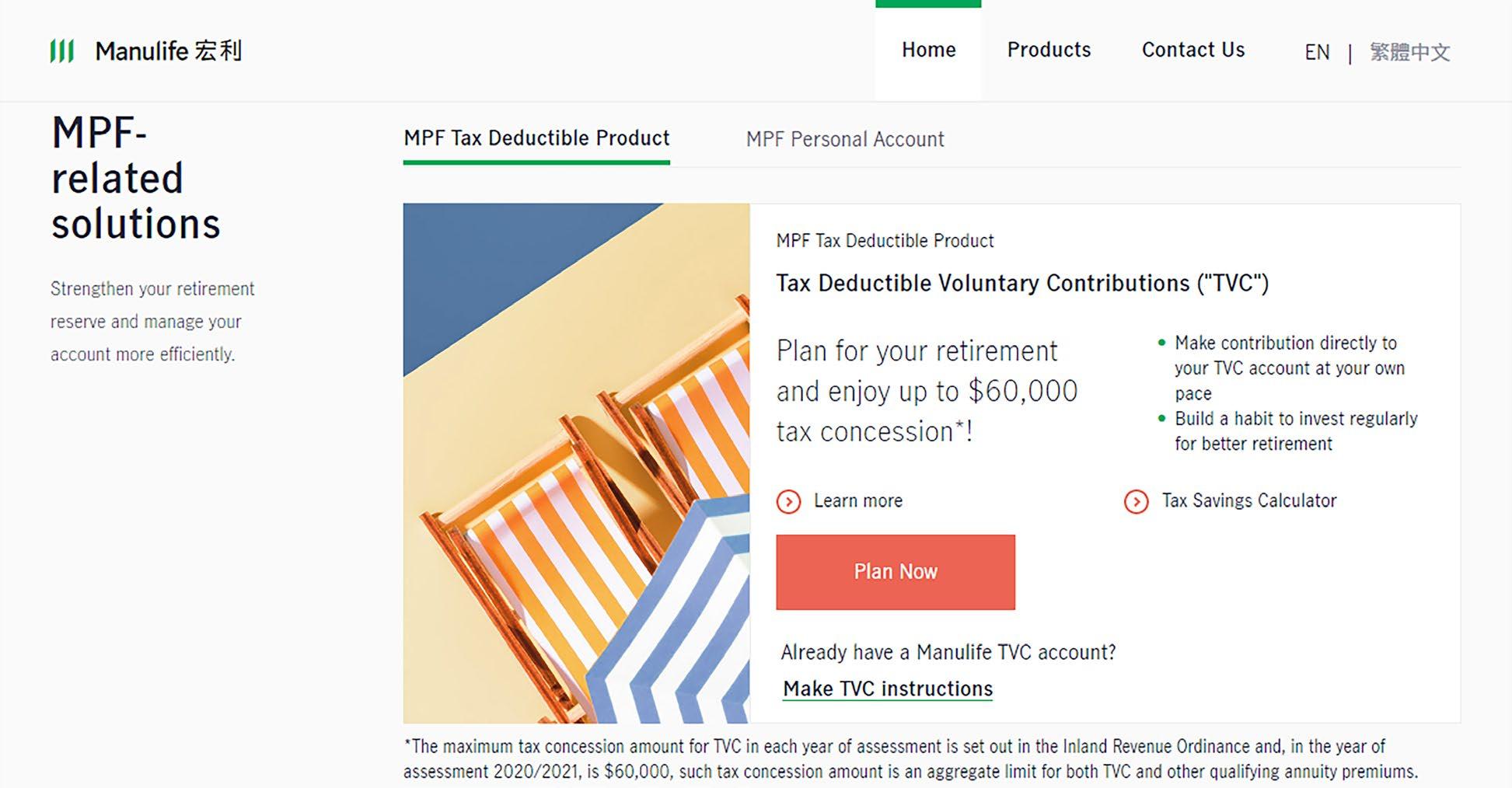
authentication. They can help customers prepare and fill out the onboarding and/or transfer applications in advance to facilitate a simpler and faster customer journey.
Personal information of the customers can be pre-populated by scanning the HKID card to capture their details using OCR technology, offering a seamless journey. In traditional paper-based applications, multiple signatures from customers are required for several administration forms. With MPFTransferSimple.hk, customers are given the convenience of signing once as compared to multiple signatures in traditional paperbased applications.
This web application also includes a dashboard for the intermediaries to manage and review the status of all applications and transfers served by them within 45 days.
Seamless self-service sales experience
Apart from assistance provided by intermediaries, there is also the option of a link shared by intermediaries to customers via WhatsApp, email, or WeChat for non-face-to-face sales journeys, whereby customers can perform the application and/ or transfer journey by themselves.
Manulife’s enablement of this seamless process in MPF PA & TVC application has been recognised by the Hong Kong Business Technology Excellence Awards 2022, crowning it as the winner in the Digital - Insurance category. The prestigious awards programme honours outstanding companies that have made exceptional contributions in the pursuit of technological innovation in Hong Kong.
HONG KONG BUSINESS | Q3 2023 19
Manulife has introduced the “MPFTransferSimple.hk” website for its intermediaries to provide a simple, flexible, and straight-through processing digital journey for its customers to onboard and/or transfer to Manulife’s designated MPF scheme for Personal Account (PA) as well as Tax Deductible Voluntary Contribution Account (TVC)
DIGITAL - INSURANCE
1 Source: “Mercer MPF Market Shares Report” as of June 30, 2022 by Mercer (Hong Kong) Limited, in terms of market share of total MPF assets by scheme sponsor.
Phillips’ ‘minimalist’ HQ showcases diverse collection of Asia’s finest art
The 50,000-square-foot headquarters features a purposely built auction room on the ground floor.
International auction houses usually operate on a pop-up model, renting out spaces to hold auctions in Hong Kong. For Phillips, however, that is no longer the case.


In March 2023, the auction house opened its new Asia headquarters in West Kowloon.


The six-storey headquarters, spanning 50,000 square feet, has visitors hooked on checking Philips’ purposely built auction room and main galleries on the ground floor.

“With our new space, we’re able to have auctions permanently. We’re able to have something on view,” Jonathan Crockett, chairman for Asia at Phillips Auction House, told Hong Kong Business

What this has achieved for Phillips is the ability to shake up their calendar and hold a series of events by ensuring a continuous display of captivating exhibitions, auctions, and various selling or non-selling activities.
“Essentially, [we] have something on view throughout the year. That is the unique proposition we offer,” said Crockett, noting that this year, Phillips has auctions slated from September to November.
Apart from its main galleries on the ground floor, Phillips also has exhibition spaces on its first and third floors. The auction house will also have a VIP lounge where they can host private events.

20 HONG KONG BUSINESS | Q3 2023 SPACEWATCH
1 3 5 2 4 6
Jonathan Crockett
The Patek Philippe Wristwatch and historically important artefacts once belonging to Aisin-Gioro Puyi are displayed at the PHILLIPS Asia Headquarters.
3
Press gather for the opening of PHILLIPS' Asia headquarters in West Kowloon.
5
Inside the ground floor auction room by Otto Ng, LAAB Architects
Inside the ground floor gallery by Otto Ng, LAAB Architects
1
2
The facade of PHILLIPS' Asia headquarters in West Kowloon at night.
4
Members of the press tour around Phillips new Asia headquarters in West, Kowloon during its opening ceremony.
6
‘Wall-less’ office opens up collaboration amongst AnyMind’s creatives
The office encourages employees to collaborate, relax, and enjoy ‘happy hour’ and ‘mental space.’
2
1
A logo of AnyMind and Acqua greets employees of the commerce tech company.

2
Full height windows surround AnyMind's meeting room.
3
4
Amongst spaces in the office where employees can relax whilst doing their job or simply take a break in the “collaboration area,” which looks like a greenfield and has bean bag chairs.

4
AnyMind's new headquarters in Kwun Tong have no walls between departments.
5
AnyMind conducts team-building activities in the office such as “happy hour” and “TGIFridays” to increase the job satisfaction of their employees.
When marketing company, AnyMind, was planning to transfer offices, the company’s main goal was to move to a “collaboration space” rather than a “coworking space,” which is why its new headquarters in Kwun Tong was fit out to have no walls between departments.


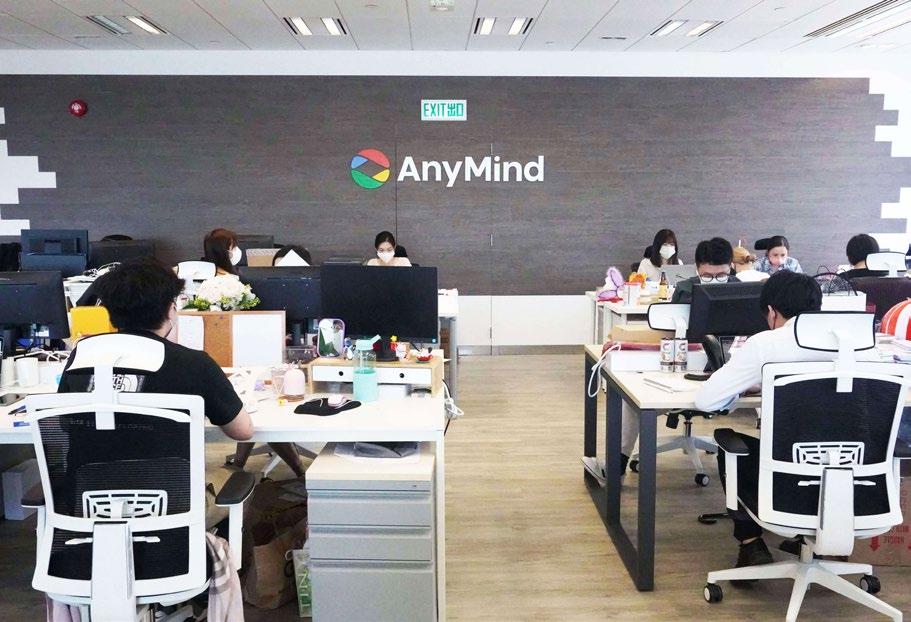
“Everything is kind of open. We particularly picked this office because there’s just full height windows all around, there’s no walls,” AnyMind Managing Director for Greater China Ben Chien told Hong Kong Business.

“Our type of business requires a lot more collaboration, less room, [and] less privacy on purpose. We don’t need as
many private areas. We designed it [in a way] that everyone can sort of hear what each other is doing; [that’s] the basis for collaboration. If we don’t know what other people are doing, it’s kind of hard to collaborate,” Chien explained.
Since floor-to-ceiling windows adorn AnyMind’s office, even its conference room–employees not only get good lighting but also picturesque city views, particularly of Victoria Harbour. The headquarters was also designed to offer employees a “relaxed environment.” Chien underscored that employees are also given “mental space” to do their jobs better and come up with more creative ideas.
HONG KONG BUSINESS | Q3 2023 21 SPACEWATCH
1 3 5
Ben Chien
Bilby.AI enables business to capitalise on regulatory changes with predictive insights
The startup predicts regulations by tracking over 100,000 entities in China.
In 2021, the Chinese government cracked down on online education providers, resulting in the drop of share prices of onlinetutoring and ed-tech firms that affected multiple investors. One of Bilby.AI’s clients in the financial services sector, however, was spared from the crackdown’s rubble as the platform predicted the regulation three weeks before it happened.
“We provided a signal to our client saying why we thought this change would happen and which sectors would be affected. Then it happened,” Ryan Manuel, founder of Bilby.AI, told Hong Kong Business.
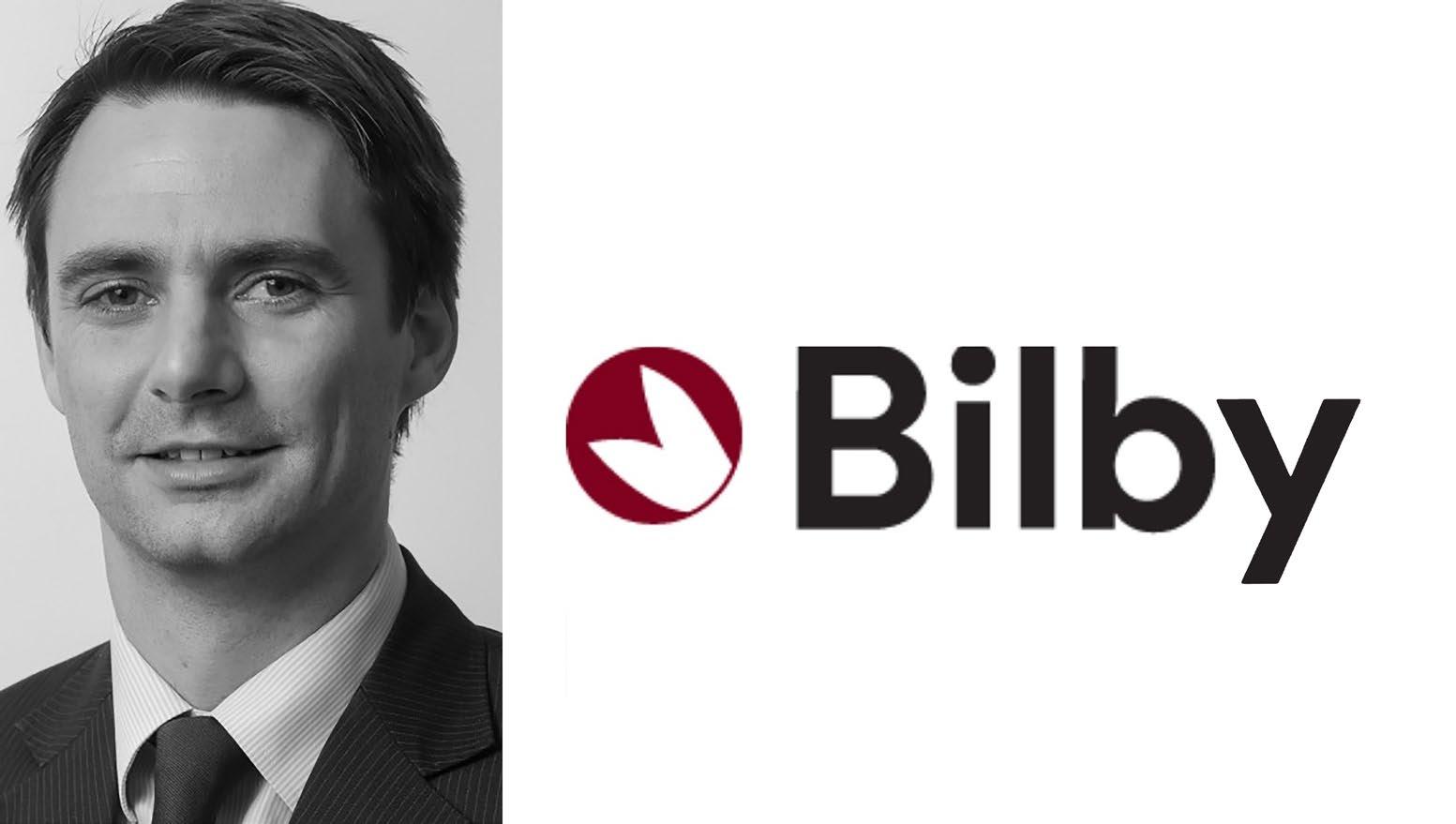
The Hong Kong-based startup also predicted a change in China’s ESG regulations, allowing one of its clients – a bank – to update its portfolio funds ahead of the implementation.
Bilby.AI is able to predict such regulatory changes by bringing data on all policy activities across a sector to a centralised database, which it then queries by running a series of algorithms that in turn generate software. Manuel explained: “We convert whatever comes out of China’s government into trading signals for big quantitative hedge funds, then provide the output as an application programming interface (API).” The startup tracks about 110,000 entities, including listed companies in China, Hong Kong, on-shore and offshore, ADRs or companies that are listed in New York Exchanges, and US companies that have exposure in China. The platform also tracks 31,000 private companies, and around 3,000 to 4,000 top leaders.
Digging deep
What Bilby.AI does is allow businesses to take advantage of changes in a country’s regulations by making policies “testable, predictable, and available as an Application Programming Interface (API).”
The startup’s predictive insights can help improve portfolio management, trading performance,
[Bilby.AI wants to] listen more and dig into things better
and the pricing of risks. Bilby.AI was born out of Manuel’s frustration working as a computer programmer, management consultant, and professor on Chinese politics. Manuel said that working across these three fields, he saw a huge need to understand what China was “saying and doing” using computers.
“After years of frustration waiting for someone else to do something about this, I just decided to do it myself,” Manuel said.
“I [felt like] there were so many missed opportunities to engage and do business and analyse [regulations] that no one was taking advantage of, because there wasn’t a computer model and that could [do it],” Manuel added.
Manuel named his startup after an Australian marsupial.
“The bilby is an Australian desert animal that digs into things. It also has big ears for listening. That seemed like a pretty good metaphor for what I wanted to do: listen more and dig into things better,” Manuel explained.
To “dig into things better” in the future, Bilby.AI is utilising recently raised funds of HK$11.77m (US$1.5m) in three ways.
“One is to improve our operational efficiency as we scale. [That involves] building repeatable and tractable
sales. Second is to improve our software for our products. The final part is to expand into new markets,” Manuel said.
Currently, Bilby.AI has models for China and India. Models for Indonesia, Vietnam, South Korea, and Japan are also in the pipeline, said Manuel.
In the next three to five years, Manuel also plans to integrate Bilby’s data and applications at a “vast scale” to become the world’s first regulations-as-an-API business.
“In essence…[we want to] add a regulatory component to financial market trading, to healthcare and pharmaceuticals, to big data companies. All of these things where APIs are starting to talk to APIs and make completely new products. We want all the world’s regulations to be available as an API and a range of different products and signals,” said Manuel.
“We already have a ChatGPT-like functionality within our work. That lets us ask questions about every signal we generate and offer, what’s known as explanatory AI. From that, our next one- to three-year vision is to bring in all our partners and their data and offer them the same function,” Manuel added.
22 HONG KONG BUSINESS | Q3 2023
Bilby.AI makes policies testable, predictable, and available as an API
STARTUP
ANALYSIS: REAL ESTATE
Gov’t must review valuations for successful land sales
Colliers estimates Hong Kong land revenue last year hit only 50% of target. The gov't always has a reserve price and it has to be realistic
Last year, the government missed its revenue target of $420b (US$54b) under the 2021-2022 land sale programme, mustering only $71.7b (US$219m). Hannah Jeong, head of valuation & advisory services in Colliers, said the factors that led to this failure boiled down to faulty valuation.

To ensure the success of Hong Kong land sales for 2023-2024, Jeong advised the government to reflect on market conditions in their valuations, given that developers, investors, and market players are under financial pressure due to interest rate hikes.
“Getting a new land with a significant billion dollars amount was not really an easy decision for many developers,” Jeong told Hong Kong Business. “I suggest that they have a discussion with different market players like surveyors, developers, and investors so that they understand (the sentiment).”
The Colliers expert cited the failed sale of the residential plot on Cape Road as an example of government valuations not matching with the market sentiment.
“The site is a luxury area, but it still has geographical challenges. Also, the interest hike was giving a lot of pressure into the luxury market, which is something not everyone can invoke. The government should reflect [on] these factors and make the reserve price more reasonable so that when bidders come in, they will be able to sell those land,” she explained.
“The government always has a reserve price and it’s not known in the market. It’s their own information. That valuation, reserve price, has to be realistic,” Jeong said.
KK Chiu, international director and chief executive for Greater China of Cushman & Wakefield, expressed the same sentiment and suggested that the government “review standard land price and bidding price to make sure they are on par with market situation.”


There are 18 plots under the 20232024 land sale programme, 12 of which are residential. Jeong pointed out that half of these residential plots are “rolling over from last year.”
“This means that the government’s KPI was actually only 50%. They
didn’t sell as they promised,” she said. Another view on why the government failed to meet its revenue target last year, said Jeong, is because the actual price at which the lots were sold are lower than the original estimation from the government.
In order for the Hong Kong government to successfully sell their plots, Jeong said it needs to “dispose of a site in a consistent manner based on their KPIs.”
Best plots
Amongst plots under the 2023-2024 land sale programme, three are likely to draw the most attention, said Jeong.
One of these is the residential site on Castle Peak Road, So Kwun Wat, Area 48, Tuen Mun, New Territories which is offering over one million square feet. The other two sites developers would be eyeing are at Yau Kom Tau, Tsuen Wan, in New Territories and Kai Tak Area 4B Site 5, Kai Tak, in Kowloon.
“The Tuen Mun and Tsuen Wan area traditionally have huge populations, and are well received in the local market. Last year, there were two successful land sales [in these areas], one bought by CK Asset Holdings in Tuen Mun. The site in Tsuen Wan was bought by Kerry Properties,” Jeong said.
Driving her point, she said: “These two sites [Yau Kom Tau and Kai Tak Area] are very close to last year’s land sales so they will receive a good response from the market.”
However, Jeong underscored that whilst the Kai Tak area offers a significant 1.13 million square feet, the site is located on a runway.
“The runway infrastructure is still not there. There are residents complaining a lot about [how] there is no monorail. Not enough public transportation, and not enough reach to go outside from the runway,” she said. That considered, Jeong thinks the site will not be well received in the market or would fetch a lower bidding price.
For 2023-2024, it is expected that 20,000 units will be brought in the supply pipeline, indicating the government’s “eagerness to make the supply and demand balanced” and make housing “more affordable,” said Jeong.
To read the full story, go to https:// hongkongbusiness.hk/
HONG KONG BUSINESS | Q3 2023 23
The gov't must review standard land price and bidding price to make sure they are on par with market situation (Photo by Diego Delso)
KK Chiu
Hannah Jeong
Auction houses thrive on Asian millennials’ art-buying power
Gen Y's affinity for contemporary art fuels anticipated growth for Christie's, Sotheby's, and Phillips.
Millennials have proven themselves to be the new generation that paints a profitable path for auction houses. In fact, last year, younger collectors accounted for 34% of Christie’s, close to 40% of Sotheby’s, and nearly a third of Phillips’ buyers.
“Asia-Pacific (APAC) remains the powerhouse of new and millennial buyers with strong buying power,” Francis Belin, president of Christie’s Asia Pacific, told the Hong Kong Business. In Christie’s recent Spring Auctions in Hong Kong, millennials accounted for 45% of all new buyers to the sales.
Sotheby’s Chairman for Asia

Nicolas Chow said millennials are also the biggest growing demographic amongst their Asian buyers in contemporary art, fashion, and luxury. Apart from accounting for the lion’s share of auction houses’ buyers, millennials from the APAC region are

also spending hefty amounts on art. In 2022, 62% of the spending from millennials at Christie’s globally was from APAC millennials.
Jonathan Crockett, chairman for Asia at Phillips Auction House, said young collectors from Asia, even first-time buyers, are spending millions of dollars on art.
“People in their 20s and 30s in the West dip their toes in the water or start off buying something that costs around US$1,000 to US$20,000. But here [in Asia], it never ceases to amaze me how pretty much every auction we have, new, first-time buyers come in at the million-dollar level and above. Sometimes, to the tune of up to US$10m.
It’s something that doesn’t really happen in the West, but seems to be prevalent here,” Crockett said.
In terms of art type, millennials are drawn to contemporary art, particularly those by Western artists.
According to Crockett, Asian buyers have been “increasingly supportive of the Western market” in the last five to 10 years.
“Asian buyers are now responsible for even creating or supporting the entirety of the market for certain artists in the West,” Crockett said.
But Crockett thinks that whilst these young Asians are influenced by Western pop culture, this influence could be temporary and can be expected to change in the future.
“I think that there’s so much talent here in Asia that is being overlooked in favour of their Western counterparts and I think that change will happen sooner rather than later."
Auction houses are brushing up their efforts to ensure that Asian artists get their deserved spotlight. Christie’s, for example, increased the number of works by Asian artists in their 20th and 21st Century Art Hong Kong Spring auctions this year
COVER STORY 24 HONG KONG BUSINESS | Q3 2023
Sotheby's Hong Kong Spring Sales 2023 (Photo from Sotheby's)
New, first-time buyers come in at the milliondollar level and above
Jonathan Crockett
by almost 20% compared to 2022. Asian contemporary art is specifically favoured by Gen X collectors, said Belin. However, millennials are also showing a growing interest in this category.
Chinese art takes centre stage
Apart from contemporary art, Asian buyers are also drawn to Chinese art.
“We saw the resurgence of the Chinese art market, the demand for classical categories, like Chinese works of art, Chinese modern paintings, and Chinese classical paintings,” Chow said, adding that the reopening of borders played a part in the market’s comeback.
“We had more collectors coming from Mainland China than we’ve seen in many years during the pandemic. For the last three years, particularly in categories that are very connoisseurship driven, like antiquities, or paintings, where each and every piece requires a physical examination, we posted the nineyear high result for those categories, selling for over HK$1.6456b (US$200m), which is an incredible result,” Chow added.
Belin said Chinese classical furniture is also sought after by Asian collectors. An example of Chinese classical furniture sold last year was a Huanghuali Circular Incense Stand. The piece sold for HK$71m (US$9m) in November 2022 at Christie’s Hong Kong, achieving a world auction record for an incense stand.
“APAC buyers collect objects that speak to their passion, cultural and historical roots,” Belin commented.
Artists fetch millions
Looking at artists, females and those with modern style are fetching millions from Asian collectors.
“There’s been a lot of interest in female artists in the last two years and there’s been a huge growth,” said Chow, adding that female artists are particularly famous in the contemporary area.
Modern artists are also gaining popularity amongst Asian collectors. Pieces by modern artists which were sold at Christie’s Hong Kong in 2022 include Zao Wou-ki’s 29.09.64. for HK$278m, Marc Chagall’s L’envol du peintre for HK$22.7m, and Pablo Picasso’s Buste d’homme dans un cadre for HK$175m.

In addition, in Spring 2023, Le promenoir des amants by René
Magritte reached HK$51m, marking the modern master’s auction debut at Christie’s Asia, and the artist auction record for Singaporean modern painter, Georgette Chen, was broken by Christie’s again with the work, Still Life with Big Durian, which realised HK$14m.
Digital market and NFTs
Unlike the past years, the digital art market has been “a little bit quiet,” said Chow. However, the expert believes that digital collectables like nonfungible tokens (NFTs) will see some growth either by late 2023 or 2024.



“Looking at how cryptocurrencies are making a comeback, we expect digital collectables to be pulled along,” Chow said.
“I think there are signs that digital collectables, may be on the way back, we have a platform now Sotheby’s Metaverse for trading in the primary sector and secondary sector, digital collectables, and we’re sort of primed to take this opportunity when the market is expected to bounce back,” Chow added.
Despite NFTs being tested amidst the volatility of the broader crypto market, Christie’s sold 87 NFT lots in 2022 across all its platforms for a total of US$5.9M (HK$46m) from artists such as Diana Sinclair, Mad Dog Jones, and Fewocious. An auction in May 2023 of digital artworks by Jack Butcher was 100% sold and totalled US$93,000 (HK$724,470).
COVER STORY HONG KONG BUSINESS | Q3 2023 25
There’s been a lot of interest in female artists in the last two years and there’s been a huge growth
Nicolas Chow
Francis Belin
An image of Yoshitomo Nara's "In the Milky Lake" is displayed during the Hong Kong Spring Sales 2023 of Sotheby's
Zhang Daqian’s "Pink Lotuses on Gold Screen" (Photo from Sotheby's)
Moving forward, Belin said Christie’s will continue to advance digital art and NFTs as a serious collecting category within Contemporary Art.
Uptrend in online auctions
Whilst the COVID-19 pandemic halted auction houses from conducting in-person live events, it also gave them a new avenue to recruit new clients.
The online platform of Christie’s, for example, was its number one recruiter of new clients in 2022,
accounting for 64% of its new buyers.
Phillips was also able to tap into an entirely new database of clients through its online offerings, said Phillip's Crockett.
“Online selling grew out of the requirement to replace our engagement with our clients and replace our in-person live events with something else. With a return of in-person, live events and the ability to travel, the requirement for an enhanced online auction offering no longer exists,” Crockett said.
“However, we found that when
we had our first online sales, we were able to serve [not only] our existing client base, but we also found that we were tapping into an entirely new database of clients we previously had no contact with,” he added.
Going forward, Phillips will have a selection of both online and live auctions, he said.
Art as an investment
Rather than buying art as an investment, the auctioneers advised clients to collect out of passion. But for those who are considering investing in art, Belin said “true masterpieces stand the test of time.”
La Montagne Sainte-Victoire by Paul Cézanne, for example, saw a 258% increase in its value. In May 2001, the painting was sold for HK$301m (US$38.5m) and by November 2022, its realised price was HK$1.08b (US$137.8m) during the sale of the collection of Microsoft cofounder, Paul G. Allen

Chinese works of art whose market value also increased throughout the years include a rare Qianlong period doucai moonflask.
According to Belin, the moonflask’s market value has soared over 10 times since it was first sold in May 1995 for HK$8.16m (US$1.03m). In May 2023, it sold for HK$108m (US$13.8m) when it was presented at Christie’s Hong Kong Spring Auctions.
Chow also had a client who bought imperial seals in the 90s. Back then, his client bought the seals for about HK$391,140 (US$50,000). Ten years ago, the seals were sold for about HK$469m (US$60m).
Chow, however, underscored that he does not encourage buying art as an investment.
“This is not what we’re here for and we really try to bring the passion and the precision of the art to the collectors around the region,” he said.
Art market's growth
Singapore is amongst the emerging art markets of Asia, given that it connects collectors from all over Southeast Asia. Whilst Hong Kong remains the location of Christie’s APAC headquarters as Asia’s key art hub, they have continued to invest in Singapore.
In October 2022, Christie’s hosted

COVER STORY 26 HONG KONG BUSINESS | Q3 2023
We really try to bring the passion and the precision of the art to the collectors around the region
Lin Chen leads the auction for Georgette Chen’s "Still Life with Big Durian" during Christie's 20th and 21st Century Art Evening Sale. (Christie's Images Limited 2023)
"La Montagne Sainte-Victoire" by Paul Cézanne [Christie's Images Limited 2023]
their most extensive cross-category auction preview event in Singapore to date at The Arts House At The Old Parliament – convening collectors from across the Southeast Asia region, and they hosted a further preview at the same location this Spring.
“We have a positive outlook in Singapore, which continues to be our key growth market,” said Belin, adding that Singapore’s percentage in Christie’s new buyer count has increased by 15% in 2022 from 2021.
Belin added that the free flow of capital and people as well as a healthy art ecosystem are some of the attributes that make a global art hub.
In August 2022, Sotheby’s also held its first ever auction in Singapore after 15 years.
“There’s been a lot of wealth [in Singapore]. [We are seeing] more and more family offices. [Our return to
the Lion City] was a way of addressing that growth. We wanted to bring and let people experience, on the ground, art and luxury. What we’ve actually seen with our sales last year was an incredible enthusiasm from the people on the ground,” Chow said.
An unrivalled art hub Hong Kong will remain a key art hub in Asia-Pacific, given its competitive advantages that took decades to build and be matched, said Belin.
“[The city] has free flow of capital; talents equipped with experience, expertise, international perspectives, and multi-language proficiency; favourable policies on tax, import and export, with efficient logistics; and geographical convenience that connects mainland China and itself with the rest of the world,” Belin said.
“The mature and ever-vibrant art
ecosystem in HK also helps cement its status as a key art hub in the region – from museums, international and local art galleries, auction houses, art fairs like Art Basel and Art Central, to seasoned and younger collectors,” the Christie’s APAC president said.

Showcasing Hong Kong’s efficiency as an art hub, Belin said it only takes two to three days for them to transfer a painting from its overseas hubs in New York, London, and Paris to their gallery in Hong Kong, and set it up for preview and sale.

The opening of M+ and Palace Museum also strengthened Hong Kong’s position as an unrivalled art hub in Asia, said Chow.
Crockett, for his part, said Hong Kong should enable arts and culture to percolate into the daily lives of the average person in the city.
“Hong Kong is a city that was built on trade and commerce and there’s a lot of wealth here. In other cities, wealth exists in arts and culture, and that’s yet to manifest itself here in Hong Kong,” Crockett said.
“I think there [is a] need for more world-class exhibitions happening here, more arts events. Art needs to be promoted more as a worthy subject to study at school. It shouldn’t just be about maths and economics,” he said.

COVER STORY HONG KONG BUSINESS | Q3 2023 27
"Outside the Window (2022)" by Chen Ke [Phillips Auction House]
"Water" by Jack Butcher [Christie's Images Limited 2023]
Art needs to be promoted more as a worthy subject to study at school. It shouldn't just be about maths and economics
Phillips' inaugural 20th Century & Contemporary Art Evening Sale at its new Asia HQ
(Photo from Phillips Auction House)
Job losses loom in Hong Kong banks as focus turns to productivity
Many senior roles were laid off whilst hiring stagnated in Hong Kong, according to experts.
OCBC Wing Hang Bank, DBS Hong Kong, and Dah Sing Bank all employed a slightly higher number of people by the end of 2022 compared to the previous year. OCBC Wing Hang added over 400 new people to its Hong Kong team; DBS Hong Kong’s total employee count is over 50 people higher than in 2021; and Dah Sing Bank saw numbers rise by over 30 people.
Tai Sang Bank, the smallest bank in the rankings, now employs 38 people versus the 36 employees in 2021. Tai Sang Bank operates out of a single branch at Des Voeux Road Central and does not offer any online banking or ATM services.

Bankers seeking a job in Hong Kong should brace themselves for obstacles as financial institutions slowed investment for human resources.
The year of 2022 saw hiring slow and roles get cut, although the overall numbers did not register any dramatic falls. Data gathered by Hong Kong Business revealed that there are a total of approximately 78,576 individuals working across 17 banks in the city as of end-2022. This is marginally lower when compared to combined total headcounts of the 17 banks in end2021, when there were 79,710 people employed by the banks.
HSBC, Bank of China (Hong Kong), and Hang Seng Bank remain the three largest banks in Hong Kong in terms of the number of people employed. HSBC and Hang Seng Bank had slightly lower headcounts compared to the past year. Based on the numbers, HSBC cut another 500 jobs in Hong Kong; whilst Hang Seng Bank’s headcount fell by 600 people.
Speaking to Hong Kong Business, a representative from Hang Seng
bank, which is celebrating its 90th year anniversary in 2023, shared that the bank is focusing on promoting its talent development priorities and equipping its workforce with futureoriented skills.
“People are our most important asset. We continue to invest in developing our colleagues through structured programmes and equip them with future-skills to support their growth. We maintain an agile approach to people resources management to meet business needs and build talent pipelines,” the representative said in a statement via e-mail correspondence.
“One of the examples is recruitment through graduate and Management Trainee recruitment programmes. We also focus on promoting our talent development priorities, especially for local talents, to cultivate young talents to become banking professionals,” the representative added.
Bank of China (Hong Kong), meanwhile, employed 12,190 staff as of end-2022.
The rest of the banks saw their numbers fall or remain the same. The Bank of East Asia, Limited saw their headcount fall below 5,000 people to 4,883. Chong Hing Bank roughly employed the same number of people by end-2022 compared to a year earlier, but moved up two spots in the rankings of largest banks by employee count as both Shanghai Commercial Bank and CMB Wing Lung Bank cut numbers in 2022. Shanghai Commercial Bank employs 200 people less as of end-2022, and CMB Wing Lung Bank 100 people less.
Of the five banks in the Hong Kong Bank Rankings with the largest staff employed in the city, Standard Chartered Bank was the only one who did not disclose their numbers as of press time.
Media reports in early June alleged that the bank has begun laying off employees across Singapore, London and Hong Kong as part of an existing plan to cut costs by more than $1b in 2024, with the number of jobs cut possibly exceeding 100.
Hiring freezes
Hiring experts revealed to Hong Kong Business that there is an informal hiring freeze and some layoffs as Hong Kong banks focus on maximizing productivity rather than hiring new employees.
28 HONG KONG BUSINESS | Q3 2023 RANKINGS:
BANKS
Hang Seng Bank, celebrating its 50th anniversary in 2023, said that they are focusing on "talent development priorities and equipping its workforce with future-oriented skills"
People are our most important asset. We continue to invest in developing our colleagues
“Over the last nine months, it’s definitely slowed down. And then over three months [in 2023], it slowed even further, especially in the wake of happenings in the global investment banking market,” said John Mullally, Robert Walters’ managing director for Hong Kong and South China.
Investment banking layoffs have hit the shores of Hong Kong, although not as much as New York and London. Mullally, in particular, noticed an amount of layoffs at the senior level positions.
“What was seen during the global financial crisis were huge swathes of bankers losing their jobs. We are definitely seeing some layoffs, especially at the senior levels, which are more visible, more noticeable,” Mullally said, adding that whilst there are no “formal” hiring freeze announcements, there was definitely an “informal hiring freeze [or] less hiring activity in general.”
Instead of hiring, banks are focused on maximizing the productivity of their workforce.
Olga Yung, managing director at Michael Page Hong Kong, said that the majority of companies and hiring managers have as their key priority the improvement of cost efficiency and productivity in 2023.

“This is a common theme across a variety of sell side players regardless of size,” Yung told Hong Kong Business via exclusive correspondence.
RMs, tech roles still in demand
Whilst hiring has slowed down due to overall weak market sentiment and negative news coming out in relation
RANKINGS: BANKS
Yung. ESG remains a hot talking point, but candidates will need relevant exposure to be considered in these positions.
“Before [the] crypto winter arrived, anyone who had experience or interest in crypto is a prospective candidate to the countless digital asset players which have emerged in the market over the recent few years. We saw high levels of hiring and interview activities across the majority of 2022, until the last quarter,” Yung said.
Too little, too late
to various banks, there are still some roles that are in demand for banks.
“Across the sell side, mid to back office operations, compliance risk, finance and audit are constantly in demand for talent,” Yung said. Private bankers and relationship managers from retail banks are also sought after.
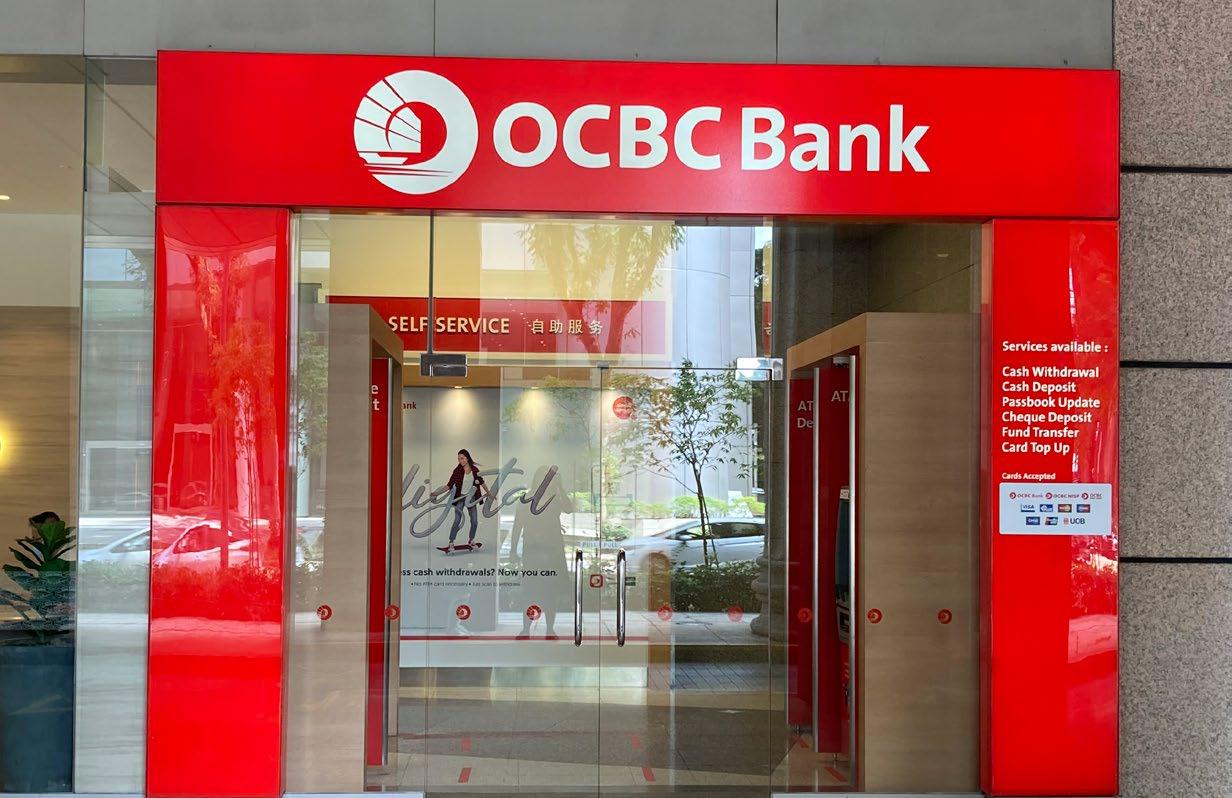
“If you're a relationship manager who can bring in assets, who can move clients, there's still a demand for that. But outside of that, [the demand] is not particularly active,” Mullally said.
Banks are also still looking into hiring quality developers and programmers, as this is a shallow talent pool in Hong Kong, he added.
In 2022, ESG and crypto are two “hot topics” in hiring according to
Banks are focused on maximising the productivity of their workforce
In 2022, the strict travel rules reportedly drove bankers and experts away from Hong Kong.

Hong Kong has since lifted its strict travel restrictions, but the effect is unfortunately nil.
“It definitely increased confidence in the market. The problem is, it happened after the financial services and the investment banking markets really slowed down hiring because of the broader geopolitical challenges in the world and broader economic challenges, such as the looming threat of a global recession,” Mullally said.
“The lifting of the quarantine was very much welcome for Hong Kong as a place for employers and employees. But the challenge now is that not many financial services firms are hiring and they’re certainly not hiring near the level that they hired in 2021,” he added.

HONG KONG BUSINESS | Q3 2023 29
John Mullally
Olga Yung
HSBC remains the bank with the largest workforce in Hong Kong (Photo source: HSBC official website)
OCBC Wing Hang logged the biggest increase in its workforce in 2022, expanding its staff by over 400 people (Photo by Ruayime R OansGunmam via Wikimedia Commons)
RANKINGS: BANKS
30 HONG KONG BUSINESS | Q3 2023
2023 Ranking Bank Percent Change Number of Employees 2023 Number of Employees 2022* CEO or Country Head 1 OCBC WING HANG BANK 18.61% 2,575 2,171 Ivy Au-Yeung 2 SHANGHAI COMMERCIAL BANK 10.68% 1,672 1,872 David Sek-chi KWOK 3 TAI SANG BANK 5.56% 38 36 Ma Ching Kuen 4 DAH SING BANK 1.09% 3,047 3,014 Hon-Hing Wong (Derek Wong) 5 DBS BANK (HONG KONG) Limited 1.08% 4,500 4,452 Sebastian Paredes 6 BANK OF CHINA (HONG KONG) 0.21% 12,190 12,165 Sun Yu 7 CITI HONG KONG 0% 4,600 4,600 Aveline San CHINA CITIC BANK INTERNATIONAL 0% 2,000 2,000 Bi Mingqiang CHONG HING BANK 0% 1,700 1,700 Jianxin Zong and Zhaoxing Zhang 10 INDUSTRIAL AND COMMERCIAL BANK OF CHINA (ASIA) -0.10% 3,000 3,003 Wu Long 11 HONG KONG AND SHANGHAI BANKING CORPORATION -2.44% 20,000 20,500 Luanne Lim 12 THE BANK OF EAST ASIA, LIMITED -3.44% 4,883 5,057 Adrian LI Man-kiu and Brian LI Man-bun 13 CMB WING LUNG BANK -5.71% 1,651 1,751 Hong Bo 14 PUBLIC BANK -4.76% 1,200 1,260 Tan Yoke Kong 15 HANG SENG BANK LIMITED -7.98% 7,020 7,629 Diana Cesar STANDARD CHARTERED BANK* 6,000* 6,000 Mary Huen CHINA CONSTRUCTION BANK (ASIA) CORPORATION* 2,500* 2,500 Jun Zhang TOTAL -1.42% 78,576 79,710 * as of December 31, 2021; retained from last year's bank rankings














Digitalisation and decarbonisation drive
M&A deals in Asia-Pacific
Technology,
ASIA PACIFIC
Businesses’ pursuit of digital transformation has been driving dealmaking activity in Asia Pacific and several experts predict it will continue to do so for the remainder of 2023. First-quarter activity showed that the Technology, media, and telecom (TMT) sector contributed two of the largest deals in the region and was the busiest sector in terms of deal volume, with 622 transactions.
“Tech acquisitions have been a consistent force driving mergers and acquisitions (M&A). Last year, we saw a lot of deals revolving around artificial intelligence and the future of work,” Sapana Maheria, director for Thematic Research at GlobalData Plc, told Hong Kong Business
“Automation and cybersecurity were very strong themes in the last few years. Cloud is also a very strong theme,” Maheria added.
These days, generative AI applications such as ChatGPT are making waves in the market. “I think innovation and tech are the two things that are going to be very strong drivers for M&As in 2023. What we expect is that as cost-cutting is going to be one of the main focus areas for
businesses, we will see a lot of focus on automation, with innovations, [and] more collaborative tools really picking up, hence, driving the M&A deal trends as well,” she said.
Within the TMT sector, Maheria said there will likely be a lot of companies focusing on cloud, cybersecurity, AI, big data, and 5G connectivity that will be acquired during the year.
In March, Singapore’s GIC Private Limited acquired a 50% stake in the Bain-owned Works Human Intelligence Co., which offers cloudmanaged service, amongst others. The deal had a value of US$2.6b, making it amongst the top deals in APAC for the first quarter of 2023.

Decarbonisation draws deals
Whilst digitalisation plays a dominant role in driving M&A deals in APAC, and globally, Sapana said decarbonisation is also seeing an upward trend.
“As 2030 approaches, decarbonisation is going to be one of the primary themes driving the M&A activity,” Sapana said, adding that most companies have environmental, social, and corporate
governance (ESG) goals set seven years down the road. Data from Marketmaker showed that in Greater China, the largest deal in terms of value was the merger of Wuhan-based luxury electronic-vehicle (EV) maker Lotus Tech with Singapore-based special-purpose acquisition company L Catterton Asia Acquisition Corporation at HK$43b (US$5.5b).
Greater China’s fourth-largest deal also involved another EV maker, WM Motor Global. The company was acquired by Hong Kong’s Apollo Future Mobility for HK$15.63b (US$2b).
“Automotive is another sector [which will likely see growth] given the themes like autonomous vehicles and electric vehicles. We’re seeing a lot of investments happening and those kinds of things,” Maheria said.
At present, the theme of decarbonisation is more prominent in venture capital deals, with companies investing in businesses and products that allow them to collect data on their emissions or track their performance of goals.
Sapana underscored that companies are also under pressure from their shareholders to address
32 HONG KONG BUSINESS | Q3 2023 FINANCIAL INSIGHT: M&A DEALS
Tech acquisitions have been a consistent force driving M&A
media, and telecom was the busiest sector in the APAC by volume with 622 deals.
We will see a lot of focus on automation driving M&A deal trends
the various aspects of ESG. “Gen Z, which will soon be the majority of the workforce, is very aware and conscious about the carbon footprint that a company has, so companies need to be very actively investing in reducing it,” she stressed.
Given the ESG movement, Maheria also predicts that the power sector will see growth in M&A deals.

“Energy transition is one of the major themes in the sector. Hydrogen and renewable energy are massive themes as well and are getting a lot of investment,” she said. “We expect [the power sector] to remain either consistent or grow in its M&A activities in 2023.”

Banking on China
Apart from decarbonisation and digitalisation, some reports are stating that the resurgence of China’s economy will also likely drive transactions in 2023.
China’s recovery, however, “may not be as smooth sailing as most have expected,” according to Sumit Punwani, partner for Corporate Finance, Deal Advisory at KPMG Singapore. “China’s reopening in Q4 2022 has led to a significant recovery in consumer consumption as seen by its recent strong performance in the domestic tourism sector during the ‘golden week’ in early May as well as a strong recovery in luxury goods spending,” Punwani said.

“Despite the meaningful rebound in the services economy, China’s manufacturing PMI declined from 51.9 (March) to 48.8 (May) and there was a subsequent decline across bellwether commodities such
as crude oil, Newcastle coal and copper,” he added.
Given these factors, the KPMG expert believes that “interest from China-based companies to participate in M&A activities will likely increase in a moderate fashion, instead of a sharp V-shape rebound.”

Maheria, for her part, underscored that there has been “greater scrutiny” on any acquisitions by Chinese firms, given the geopolitical tensions involving the APAC superpower.
When it comes to UK-based or US-based companies, especially those with patents, those kinds of acquisitions are getting blocked. We expect it will probably continue, not just in 2023, but probably long term as well,” Maheria said.
Dragging deals
Geopolitical tensions, along with macroeconomic forces, have contributed to the regression of M&A transactions across APAC in the first quarter of 2023 and these factors are likely to dampen deal sentiments throughout the year.
“Market sentiments due to recent developments in the financial services sector, recession fears and geopolitical concerns such as China’s economic recovery and the Russia-Ukraine situation will continue to influence sentiments among C-suites in the Asia Pacific region,” said Punwani.
“Given current elevated levels of global macro uncertainty, we are expecting companies to be more prudent in their overall M&A strategy and to adopt a cautious approach, especially until the end of
Q3 of 2023,” he added. Also, supply chain issues may impact the M&A market negatively in the short term, asserted Maheria.
Entering deals
Given the risky macro environment, Punwani said companies should “adopt a long-term lens in assessing deal opportunities.”
“The value extraction timeline could be prolonged in the event of a further downturn in the economy. In the same vein, companies should ensure that their cash flow requirements can be met with sufficient margins of safety when contemplating to fund an acquisition. This is a key area that companies tend to overlook, as the cash flow requirements of the target postacquisition are often underestimated, which could result in funding stress during a prolonged economic downturn,” the KPMG expert added. However, he said the current environment can create ample opportunities for companies, especially those with strong balance sheets and funding capabilities. Maheria had a similar sentiment, saying that valuations have dropped and it’s a good time to make a strategic acquisition.
There has been greater scrutiny on any acquisitions by Chinese firms
“One of the quotes by Warren Buffett is when the valuations are lower, when we are in a recessionary environment, that’s the best time to go for an acquisition because you will get the same company or the same capabilities, but at a lower price. We’ll see those kinds of critical acquisitions definitely happening, and APAC will play a massive role,” she said.
HONG KONG BUSINESS | Q3 2023 33 FINANCIAL INSIGHT: M&A DEALS
Sapana Maheria
Sumit Punwani
Experts predict that the power sector will see growth in M&A deals
Given the risky macro environment, companies should adopt a long-term lens in assessing deal opportunities
Asian insurers’ AI-readiness dictates their competitive advantage

Experts reveal why insurers that adapted AI earlier are now realising bigger extra earnings or cost reductions. ASIA PACIFIC
Artificial intelligence (AI) has the potential to add up a massive US$1.1t in annual value for the global insurance industry: approximately US$400b could come from pricing, underwriting, and promotion technology upgrades; and US$300b from AI-powered customer service and personalised offerings. Asian insurers as they are now, however, are not fully prepared to take advantage of this multi-billion dollar potential.
“For most Asian insurance leaders, traditional organisational structures with multiple intermediaries and limited in-house tech and data resources make it difficult to visualise, let alone quantify, the potential benefits of investing more broadly in AI,” read a report by McKinsey & Company’s Hong Kong Senior Partner Violet Chung, Singapore Consultant Pranav Jain, and Chennai Partner Karthi Purushothaman

Critical differentiator
AI has been named by experts as amongst the biggest trends that will shape the insurance industry in the coming years. When applied in tandem with human resource, AI’s ability to analyze data quickly and accurately will enable vast amounts of data to be leveraged in efficient and innovative ways. This is the main assertion of business management services company, Accenture, in its Insurance Industry 2023 Outlook.
“What generative AI finally presents for the industry is a very manageably actionable way to start balancing the efficiencies that they’re looking to gain with the
For most Asian insurance leaders, traditional organisational structures make it difficult to visualise the potential of AI
experiences that consumers are increasingly demanding in the commercial and in the personal space,” Daria Sharman said in Accenture’s “Insurance News Analysis” segment.
“So when we think about — particularly, I talk about underwriting and the challenges of underwriting — and what generative AI finally does is, it gives underwriters and the actuaries of the world both a strategic and a tactical asset,” added the senior manager for insurance at digital agency, Accenture Song.
In the report “Insurer of the future: Are Asian insurers keeping up with AI advances?”, McKinsey & Company noted that investment in AI is increasingly becoming a source of competitive advantage amongst insurers.
Out of the 1,492 respondents surveyed in December 2022, insurers who reported the most significant gains from AI adoption – 20% or more earnings before interest and taxes – employed advanced AI practices, use cloud technologies, and spend efficiently on AI.
More notably, these companies are more likely than others to engage in a range of AI risk mitigation efforts.
Accenture Song’s Sharman echoed this sentiment.
Violet Chung
“From a risk assessment perspective on the strategy side, what generative AI does with the machine-learning algorithms is [that it] really speeds up that analysis of the data and leverages those algorithms to truly get to an accelerated predictive modeling capability for forecasting anything from just like a climate casualty to personal behaviour changes,” Sharman said.
34 HONG KONG BUSINESS | Q3 2023 INDUSTRY INSIGHT: INSURANCE
Source: McKinsey & Company
INDUSTRY INSIGHT: INSURANCE
AI Enabled Insurer of the Future

Challenges for Asian insurers
While some insurers have achieved select wins by implementing AI solutions within individual layers, the transformation required to achieve the full-stack capability that powers the companies mentioned above remains elusive in insurance, McKinsey’s Chung, Jain, and Purushothaman said.
Oftentimes, the problem Asian insurers face is identifying where to start.
“The first step is to determine how AI can support the organisation’s strategic goals and then assess the organisation’s current state of AI readiness across each of the four layers. A simple scoring methodology can help insurers identify their readiness on a scale from one to five for each layer, with stage five signifying the highest level of AI maturity,” the analysts said.

Another challenge, according to McKinsey & Co, is determining the optimal path forward depending on how far along they are in AI readiness, to reach where they need to be when it comes to AI maturity and enterprisewide integration.
“Insurers with in-depth insight into their AI readiness are better equipped for the next step: creating a road map for implementing AI solutions across the front-, middle- and back-office functions of their companies,” McKinsey’s Chung, Jain, and Purushothaman co-wrote.
This road map allows company leaders to calibrate expectations as well as the resources, time, and investments needed.
However, whilst each insurers’ journey to AI readiness varies, the end goal remains the same: a more innovative, profitable, digital-forward organisation that meets and anticipates customers’ evolving needs with highly personalised, omnichannel experiences, McKinsey said.
Personalisation
Insurers’ senior management agendas are undoubtedly colored with notes on creating more exceptional customer experiences, which is something that AI could bolster.
“Some Asian insurers have used micro personalisation based on consumer personas to realise gains in overall engagement; nonetheless, most have fallen short of employing dynamic, one-to-one customer targeting to create the personalised, consistent, omnichannel customer experience that characterises mature AIpowered engagement. In other words, personalisation
at scale,” the McKinsey experts said. In Asia, most large insurers are halfway along the path of achieving personalisation at scale, they added. These insurers prioritised four key metrics, namely: measurement and attrition; aggregating data into a single platform; application of analytics models to support customer acquisition, cross-selling and sales functions; and delivery of individually curated, personalised content at every interaction and point of contact.
Three models
Chung, Jain, and Purushothaman further identified for the McKinsey report three models that Asian insurers can adapt moving forward.


The first is building a digital hybrid agency. As an example, they noted one global insurer who redesigned its agency channel to be AI-ready, and in turn realised an incremental impact of several million dollars over the subsequent years.
Specifically, the insurer reportedly used geospatial network optimisation to identify geography-specific agents’ demand and capture growth opportunities and then used this data to inform its local recruitment strategy. Ramp-up time from newly hired agents to full productivity fell significantly, and retention rates rose. The company did this by adopting a behaviour-driven, nextbased action recommendation engine and customised learning plans based on agents’ individual performance.
Another insurer used AI-based assistants to support online interactions in real-time. This resulted in the insurers recording a monthly average of approximately 100,000 client-meeting hours. AI-facilitated policy issuance at this company was more than US$100,000 in 2021, and agent productivity improved, as measured by a 25%-30% increase in net book value per agent.
Bancassurance and ecosystems
Apart from using AI to build a digital hybrid agency, insurers may also opt to explore the use of AI in digital bancassurance; or take a leaf out of InsurTech’s books and explore how to embed services in ecosystems.
Bancassurance remains the second-largest channel driving life insurance sales globally, the McKinsey analysts noted. However, due to legacy bank systems, it is perhaps the most challenging to transform.
One way that an Asian insurer transformed its bancassurance service is by using customer analytics and microsegmentation-based customer personas. Based on these analytics, journeys selected were either “fast” (moved directly to the product list) or “long” (with content integration), depending on customer preferences. Within four to five years, bancassurance penetration almost doubled and first-year premiums increased by 30%-40%, McKinsey said.
Several InsurTechs have adopted their own approach in using AI and the digital ecosystem to advance their business, that is, through partnerships.
“Partnerships with leading players — generally the top 15% — to offer select products with simple terms, a short process, and fast and convenient claims can help meet specific user needs for health, auto, life, accident, and other types of coverage,” read the McKinsey report.
To read the full story, go to https://hongkongbusiness.hk/
HONG KONG BUSINESS | Q3 2023 35
Daria Sharman
Karthi Purushothaman
Pranav Jain
Insurers with in-depth insight into their AI readiness are better equipped for creating a road map for implementing AI solutions
Source: McKinsey & Company
Physical stores catch up to e-commerce as spending shifts back to offline
Online stores have expanded aggressively in recent years, leading the industry to question the future of brick-andmortar stores; but CBRE found that fewer than 5% of consumers in the Asia Pacific shop purely online, proving that it is not over yet for physical stores.
In its 2023 Asia Pacific Retail Flash Survey, CBRE found that nearly half of the retailers in the region expect a portion of online spending to be shifted to physical retail and 42% see that footfall in physical stores will return to its pre-pandemic levels.
“One very important fact is that fewer than 5% of consumers purely shop online. There is a huge range of hybrid shoppers, who have different shopping behaviour,” Ada Choi, CBRE’s head for occupier research and intelligence and management in APAC, told Hong Kong Business

“This is also a challenge for the brands that have to cater to different shoppers’ behavior switching between online and offline and be able to address those issues.”
New generation of physical stores
CBRE found in the same survey that operating online retail platforms are increasingly becoming expensive, driven by higher transportation costs, supply chain disruptions, and labour shortages. In addition to this, Google has increased its cost-per-click fee by 15% in 2021 which was particularly detrimental to smaller retailers.
For these reasons, 66% of retailers project that it would be costly to operate online businesses this year. Moreover, 71% of retailers are planning to expand or add new stores in 2023, whilst only 15% have plans to right-size.
“I think for the new generation of physical retail stores, they have to support online shopping, and fulfill other very interesting demand from the shoppers – Instagrammable or more social media-friendly
kind of elements,” said Choi. The CBRE survey also showed that whilst the younger generation is more tech-savvy, the majority of them are more likely to shop offline as they represent the market that looks out for potentially creative social media posts.
Choi added that interestingly, 61% of shoppers in the region prefer to see products in-store before ordering online, which she linked to the more condensed living environment in the Asia Pacific. This is also higher than in Europe and the Americas – yet another proof that physical stores are here to stay, she said.

“It is easier for us to go to the shopping centers and take a look at the product… The reason for going to an offline store is always about expertise, the experience… and [because] they need to feel the product,” Choi said.
“I think this also makes it very important for the retailers to continue to optimise their sales network and be able to assess their consumers in different parts of the market,” she added.
Retail investment outlook
Physical retail stores have started to stabilise in the latter part of 2022, and investments in the sector have
improved. Choi, however, noted investment sentiments in retail are still behind other sectors, such as the office and industrial markets.
In this light, CBRE projected a “largely flat” investment volume during the year. “There are quite a lot of uncertainties. For example, the volatility in the financial markets, and the concerns about the banking sector. This will also affect the investment sentiment as a whole and therefore also the retail investment,” said Choi.
“Another investment driver is the interest rate environment. As we note, the US has had the steepest increase in interest rates in the past year. At this moment, people are expecting the interest rate to peak within the middle of this year and if this happens, the sentiment will improve after we hit that peak. Let’s hope for this to come earlier,” she added.
Retail investments have been led by markets that reopened their borders early on, including Australia, Singapore, and Japan. Japan is amongst the most preferred markets as it is not affected by highinterest rates.
Furthermore, Hong Kong may be in the running as it rebounds after reopening alongside Mainland China, added Choi.
36 HONG KONG BUSINESS | Q3 2023 REPORT: RETAIL
Younger consumers are more likely to shop offline as they represent the market that looks out for potentially creative social media posts
More than 71% of retailers in Asia Pacific plan to expand or add new stores in 2023. ASIA
PACIFIC
The
reason for going to an offline store is always about expertise and the experience [to feel the product]
Ada Choi
Traxon e:cue wins the title of ‘Innovator of the Year’ at HKB Management Awards 2022
Traxon e:cue's commitment to cutting-edge lighting technology, sustainability, and customer satisfaction shines through.
Traxon e:cue, a member of Prosperity Group, has been awarded the title of ‘Innovator of the Year’ at the prestigious Hong Kong Business Awards 2022, a testament to the company’s outstanding contribution to the field of lighting.
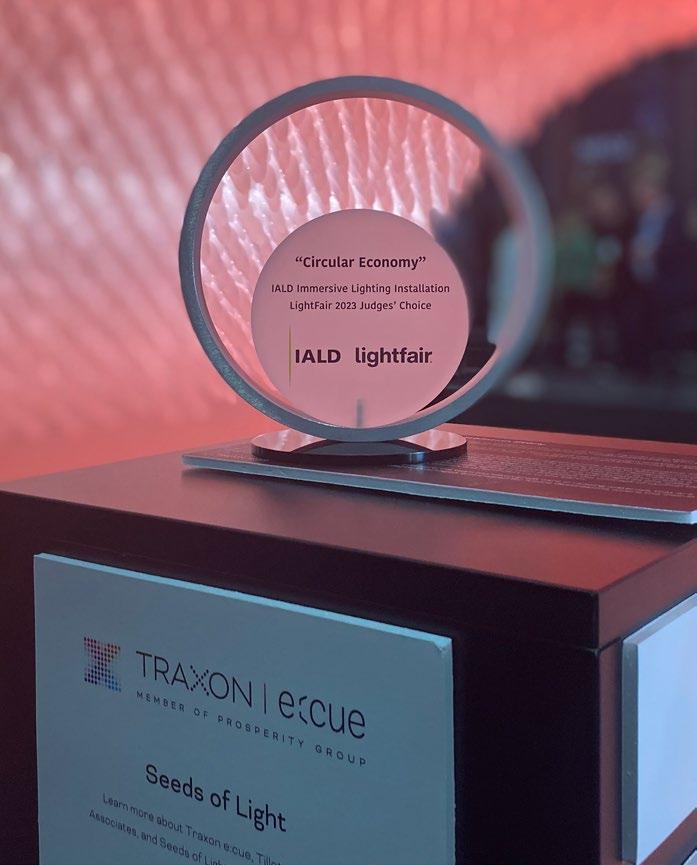

Traxon e:cue prides itself on its commitment to cutting-edge lighting technology with sustainability and customer satisfaction at its core. An example of this is the recently launched Traxon Washer Pro, a game-changing family of wall washers that is 65% smaller than conventional wall washers and has a power output of over 20%. Minimum size, maximum light with a significantly reduced carbon footprint.
Traxon e:cue's success can be attributed to
its focus on research and development. The company invests heavily in R&D to come up with new and improved lighting solutions that meet the changing needs of its customers. Its team of engineers and designers work closely with clients to understand their requirements and come up with customised solutions that are tailored to their specific needs.
In addition to innovation, Traxon e:cue is also committed to sustainability. Its lighting solutions are designed to be energyefficient and environmentally friendly. The company uses state-of-the-art technologies such as LED lighting and advanced control systems to reduce energy consumption and minimise carbon emissions.
Illuminating Excellence
The Traxon e:cue lighting and controls range of products combines aesthetics, functionality, and energy efficiency, and has been used in some of the world's most iconic buildings including the Shanghai Tower in Shanghai (China), Landmark 81 Tower in Ho Chi Minh City (Vietnam), One Manhattan West Building in New York City (USA), and the Golden Temple in Amritsar (India) to name a few.
Receiving the Innovator of the Year award is a great honour for Traxon e:cue, and it is a
testament to the company's dedication to excellence in all aspects of its business. The award also highlights Hong Kong's status as a hub for innovation and technology. Traxon e:cue is proud to be part of Hong Kong's vibrant business community and is committed to continuing its tradition of innovation and excellence in the years to come.

Overall, Traxon e:cue's success can be attributed to its focus on innovation, sustainability, and customer satisfaction. The company has set a high bar for itself in the field of lighting solutions and is constantly pushing the boundaries of what is possible. The Innovator of the Year award is a well-deserved recognition of Traxon e:cue's achievements, and we look forward to seeing what the company will accomplish in the future.
Traxon e:cue's success can be attributed to its focus on innovation, sustainability, and customer satisfaction. The company has set a high bar for itself in the field of lighting solutions and is constantly pushing the boundaries of what is possible

HONG KONG BUSINESS | Q3 2023 37
Washer Pro Family
Mr Jacques Fischer, Director, Product Planning Management
INNOVATOR OF THE YEAR - MATERIALS & CONSTRUCTION
Winner at Lightfair 2023
Livi bank launches game-changing app for SMEs
Going fully digital raised 'livi Business' disbursements to over HK$70m as of end-April.
Small and medium enterprises (SMEs) are often touted as amongst the most underserved segments by traditional financial institutions. And the case is no different in Hong Kong, which is why virtual-only bank livi’s newest product offering, the “livi Business” app, is a game changer for local small business owners.
The app offers a fully automated account-opening process that can reportedly be finished in just 20 minutes, with the possibility of having their new accounts opened in as little as 24 hours.
“In Hong Kong, we recognised [that] the pain point of the SMEs over here is opening a bank account. Getting loans often takes weeks, if not months,” Gary Lam, chief technology officer at livi Bank Ltd., told Hong Kong Business. This is why livi Bank came about designing and launching livi Business.

“SMEs in Hong Kong have been significantly underserved by traditional lenders. We are determined to help to make a difference with our less human intervention, digital enablement, and strength in our technology,” Lam added.
This sector of enterprises are also promised to secure a loan in as fast as 24 hours by livi. Through its livi Business Installment Loan, SMEs are offered unsecured loans of up to HK$8m (US$1.02m), at an interest of as low as 0.28% per month, equivalent to an Annualized Percentage Rate (APR) of 6.52%, with installments of between six to 60 months.
Apparently, it’s been a hit. By the end of April 2023, the total approved loan amount from livi Business had reached HK$70m (US$8.9m) in loans disbursed, Lam said.
Livi has observed a lot of demand for remote account opening as well as cash flow needs amongst local SMEs.
Lam further noted that Hong Kong SME customers shared frustrations over the fact that they don’t have more control over the loan application process, and sought more transparency on the progress of their application.
“Account opening and loan applications require a lot of manual intervention, lots of documentation and submission from the SMEs,” Lam said.
Taking note of these, livi Business makes use of artificial intelligence (AI) and e-Know Your Customer in order to help SMEs apply for a bank account and secure loans without having to visit a physical bank branch.
Improving data
Lam explained that livi Business’ uses data and technology in order to better provide the right customer service that will meet SMEs cash flow needs. The importance of improving their data is something that livi Bank is more than aware of.
“We [are] looking into some official data providers for company register information such that we can use more
electronic ways, use API to enable the data flow — instead of asking our customer to data punching manually as save a lot of time for them,” Lam said, commenting on the service’s automated and fully digital account opening and application process. “There’s no time limitation for our customers; they can open an account in business hours or after hours or even midnight,” Lam said.
Apart from business loans, livi Bank has also introduced an invoice financing service through the network of one of its shareholders, Jardine Matheson. The service is offered to the network’s construction and engineering space.
“The strong momentum of livi Business accounts opening and business installment loans are just the beginning. We will continue to capitalise our advanced technology shareholder networks to provide high quality competitive offers to address different needs from our SME customers,” Lam pledged.
Livi bank is one of Hong Kong’s eight virtual-only banks. First launching in 2020, the bank reported a positive operating income of HK$17m two years later. This was attributed to its growing portfolio of loan products.
As of end-2022, livi bank shared that its total loan balance has surpassed over HK$1.3b, whilst deposit balance is at HK$3b. Its loan-to-deposit ratio reportedly increases 14 times during 2022, which livi bank said indicates that it is on a positive growth trajectory.
38 HONG KONG BUSINESS | Q3 2023 INTERVIEW
We are determined to help make a difference with our less human intervention
The livi Business app helps SMEs secure a loan in as fast as 24 hours
(Photo: Gary Lam, CTO, livi Bank)
APAC’S LEADING REAL ASSET MANAGER POWERED BY THE NEW ECONOMY
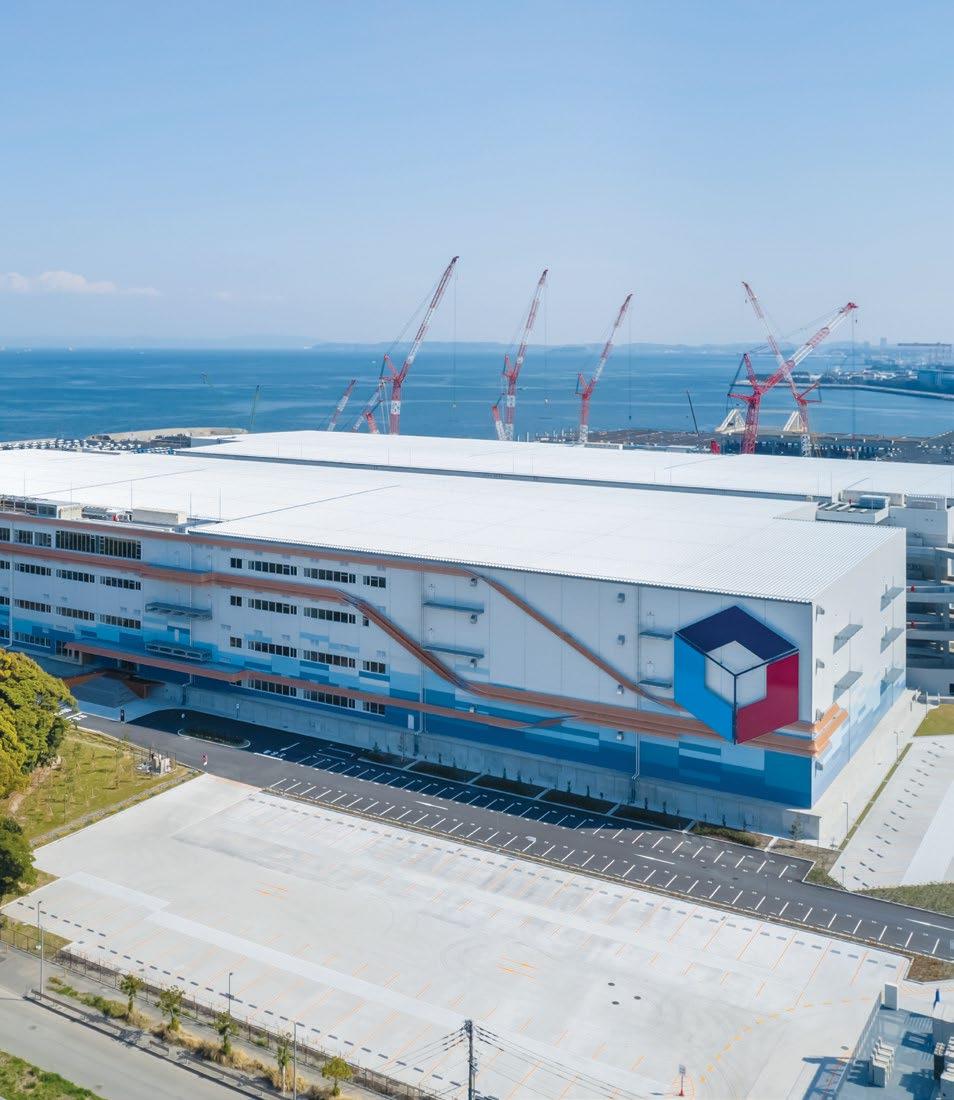

With our industry-leading efforts ranging from capital raising to green initiatives and sustainable operations, ESR has set benchmarks in the industries we serve.
Find out more at ESR.COM

HONG KONG BUSINESS | Q3 2023 39
INVESTMENT DEVELOPMENT
FUND MANAGEMENT
ANALYSIS: AT-1 BONDS
AT-1 write-down ‘negligible’ to APAC banks, but should they still worry?
Analysts said APAC banks will suffer no direct impact from Credit Suisse but should keep an eye out on regulators.
ASIA PACIFIC
Credit Suisse’s $17b writedown of Additional Tier-1 (AT-1) notes early this year has caused quite a stir in the banking industry in Asia-Pacific, particularly following other recent banking crises in the Western hemisphere.
AT-1 bonds – also known as “CoCo” bonds, as they are designed to be “contingent convertible” – are a type of hybrid debt that can be converted into equity if a predetermined event occurs. In simpler terms, Nicholas Antonio T. Mapa, ING Bank N.V. Manila’s senior economist, said in a written response to Hong Kong Business: “[AT-1] bonds act as additional capital to act as a buffer for banks; but they can be converted into equity in the event that the bank will need to lower debt.”
Since the global financial crisis of 2008, this instrument was created to avoid a catastrophe for corporations so big that national institutions would have to intervene.
“In the event of a crisis, these bonds can be converted into equity and partially or fully written down temporarily or permanently. This depends on the bond prospectus, which usually includes triggers, such as if a capital ratio falls below a certain level or if the regulators believe the bank is no longer viable,” said Gary Ng, senior economist at Natixis Corporate & Investment Banking, in a separate correspondence.

How APAC has fared
The consequences of the Credit Suisse write-down have raised questions about the impact it could have on other regional institutions, particularly in APAC. But financial experts have not provided a clear answer on the matter. With the Swiss investment bank UBS Group’s takeover of Credit Suisse for a humble CHF3b ($3.4b) and the Swiss authorities’ write-down, investors are in a quandary on whether or not these bonds are worth the trouble. As there may be concerns over the impact of AT-1 bond losses on global
banks, Natixis Research notes that Asia has not experienced extreme cases with heavy dependence on these bonds – perhaps, up to 40% for some entities. But banks in the region still face risks.
“The reliance on using AT-1 to raise capital is all-in-all the same amongst banks notwithstanding a smaller fall in bond prices in Asia,” Natixis’ APAC Chief Economist Alicia Garcia Herrero and senior economist Ng said in a note.

AT-1 bonds in Asia declined by 4.3% on average, compromising big international banks in Hong Kong. The average was smaller than the double-digit decline seen in other markets, Natixis showed.
“Banks based in Asia but with a global presence or rumoured to have large AT-1 holdings, also suffered. For the rest, the decline is relatively mild. As such, whilst it is hard to say Asia is fully sheltered, at least it is not in a hurricane’s eye,” Natixis’ note added.
Other than AT-1 bonds, Tier-2 bonds in Asia slightly fell, landing at 1.1%. And although the repricing of AT-1 notes poses risks, Ng said it is unlikely that Asia will experience anything close to a “full-blown
global financial crisis.” He added: “It is likely that some investors will pick Asian names if they want to invest in AT-1 bonds, but the general sentiment is still cautious now.”
Despite a milder selloff in AT-1 notes compared to the global average, lenders might prefer conversion versus write-down clauses. Even if demand peaks, investors would choose Asian banks with lower credit ratings.
Of course, APAC regulators reacted to the banking catastrophes, even more so after the Credit Suisse wipeout. An example is the Bangko Sentral ng Pilipinas, the Philippines’ central bank, saying its banking system remains safe and sound despite global turbulence in the industry.
Another statement from the Monetary Authority of Singapore declared that the Singapore branch of Credit Suisse would remain operational despite the UBS takeover and have been in close contact with the Swiss Financial Market Supervisory Authority.

“Regulatory changes can also impact the issuance of AT-1 bonds in the future.”
To read the full story, go to https:// hongkongbusiness.hk/
40 HONG KONG BUSINESS | Q3 2023
Investors are in a quandary on whether or not these bonds are worth the trouble (Photo by Hadi)
Asian banks with a global presence suffered
Alicia Garcia Herrero
Nicholas Mapa
Discover 20,000 Fine Wines De ivere o o r oor
Authentic wines. Best prices. Free shipping.

China's trusted content-driven, cross-border fine wine marketplace.




Creating 'smarter' fashion with AI integration
Experts reassure that the technology can be a designer's ally and spark inspiration, dispelling fears of it replacing humans.
Opening the doors of fashion to artificial intelligence (AI) may raise concern that technology has come to replace designers; but some fashion experts in Hong Kong have developed ways to inspire and even fill gaps in design with AI.“For the past few months, there has been so much talk about AI coming to take over all our jobs and how it is going to rip at the personality of design,” Dr. Jeanne Tan, associate professor at Hong Kong Polytechnic University’s (PolyU) School of Fashion and Textiles. But Tan -- also the centre assistant director at the Laboratory for AI in Design (AiDLab), a research platform established by PolyU and Royal College Art -- assured that designers are here to stay because AI cannot replicate learned skills and intuition in creating good design. What AI can do, she continued, is work for the designers’ favour through various applications, such as fashion assistance.
Sparking designer inspiration
“For upcoming seasons, designers must have new inspirations, new design ideas, and elements, whilst also
considering the fashion trends at that time. Can AI do this? I don’t think so,” said Calvin Wong, professor in fashion at the same school and centre director of AiDLab.

Wong made this clear as he spoke at the Innovation in Design Summit 2023: AI & Design for Better Lifestyle and Fashion Future, held during the April Lifestyle Fair, hosted by the Hong Kong Trade Development Council (HKTDC) on 19-22 April 2023.

Moving past fears often linked to AI, Wong said the technology can be used as a tool to spark inspiration amongst designers. He cited how AiDLab developed the AI-based Interactive Design Assistant for Fashion (AIDA), the first designerled AI system. AIDA generates unlimited design proposals based on the designers’ creative inspirations, whilst maintaining designers’ signature style.
“The designer controls and manages AI,” said Wong. “It means that the system can facilitate and spark designers’ inspiration and also speed up the whole design process by over 60 to 70%.” AiDLab has
already caught the attention of some local and international designers. Perhaps, the most notable of these is its collaboration with international fashion brand ANTEPRIMA, which used the system in launching its 2023 Spring-Summer collection.
“AIDA can help generate 3,000 outfits within two days... We condensed from 3,000 outfits to 250 and then eight outfits to create a capsule collection in just four days,” Wong said. “I think that it’s quite impossible to do this by using the conventional fashion design process.”
Articulating textile feel
Apart from inspiring designers, AI proved to be useful for designers, who have learned to assess materials through touch, but have struggled to communicate to those who do not share their skills.
“When designers go to expos, or trade fairs, they’re taking photographs. They’re making copious notes about their perceptual experience of the materials that they are sourcing; but when they get back to the lab or the studio, it’s very difficult for them to recall and communicate their perceptual experiences,” said Sharon Baurley, director and professor of design & materials at Royal College of Art’s Materials Science Research Centre.
Together with AiDLab, the Royal College of Art developed the AiLoupe application, which designers can use as reference in assessing textile materials. AiLoupe is a fabric identification tool that uses image recognition to present the designer with data on scanned material.
Just last February, they were able to beef up their dataset through the Fashion x AI exhibition in Hong Kong during which they invited participants to contribute in training the AI, Baurley said.

Nearly 400 classifications were gathered during the exhibition, helping improve AiLoupe’s classification model with real images.
“I think the AiLoupe could provide the designer with a better tailored material library application,” said Baurley, adding that consumers could also potentially benefit from the app as it can provide a deeper understanding of the products.

42 HONG KONG BUSINESS | Q3 2023 EVENT COVERAGE: APRIL LIFESTYLE FAIR
AI can be used as a tool to spark inspiration amongst designers
Calvin Wong
Dr. Jeanne Tan
Sharon Baurley
EVENT COVERAGE: APRIL LIFESTYLE FAIR
HK reclaims status as global hub for lifestyle products
The April Lifestyle Fair 2023, hosted by Hong Kong Trade Development Council, attracted nearly 56,000 buyers from over 130 countries.
Buyers from all over the world had always turned to Hong Kong for the latest lifestyle products, until the pandemic shut its borders. Now that borders have reopened, so has Hong Kong reclaimed its status as a global hub through the staging of its April Lifestyle Fair which has attracted nearly 56,000 buyers from over 130 countries. “The development of the creative and knowledge-based economy has become a major driving force for global economic growth,” Sophia Chong, deputy executive director of the Hong Kong Trade Development Council (HKTDC), said.
“For the first time in April, the HKTDC held seven major lifestyle and licensing events concurrently,” she added.

5-in-1 April Lifestyle Fair
The April Lifestyle Fair included five exhibitions: Home InStyle; Hong Kong International Home Textiles and Furnishings Fair; Hong Kong Gifts & Premium Fair; Fashion InStyle; and Hong Kong International Printing & Packaging Fair.

Notably, what had been previously known as the Hong Kong Houseware Fair and the Hong Kong Fashion Week were rebranded in this year’s fair as Home InStyle and Fashion InStyle, respectively.
Hong Kong Exporters’ Association Vice Chairman Helena Chiu, who is also a member of the Fair Organising Committee, said the new name, Home InStyle, reflects “the positioning of the fair and the latest industry trends and bringing more design and cultural-oriented products to buyers.”


“In this fair, the Home InStyle and the Hong Kong International Home Textiles and Furnishings Fair have attracted more than 2,800 exhibitors from 21 countries and regions and this, again, reaffirms Hong Kong's position as the global hub for lifestyle product procurement,” asserted
Chiu. Similarly, Katherine Fang, who chairs the HKTDC Garment Advisory Committee, explained that relaunching Hong Kong Fashion Week as Fashion InStyle was intended to better respond to the latest industry trend.
The Fair which featured innovative fashion technologies, such as 3D-printed fashion, AI, and RFID, attracted 500 exhibitors from across the industry chain.
The Fair, held at the Hong Kong Convention and Exhibition Centre (HKCEC) on 19-22 April, was joined by 4,100 exhibitors from 23 countries and regions. Exhibitors and traders are able to access the Fair online until 29 April through the Click2Match smart business matching platform, provided under HKTDC’s Exhibition+ hybrid model.
Optimistic growth outlook
Apart from the influx of buyers and sellers at the Fair, HKTDC also found an improved business sentiment amongst the participants.
A survey commissioned by the HKTDC showed that more than half of the respondents (52%) expect that the easing of health restrictions and the restoration of business travel would positively impact business and sales. The report, which surveyed
850 exhibitors and buyers at the fair, also found that nearly 70% expected business and sales to revert to their pre-pandemic levels within the next six to 18 months. Across markets, most buyers have also expressed their preference for Hong Kong (85%) and Mainland China (60%) for trade-fair participation. Other markets being eyed as buyers’ new targets in the next two years are Northern and Western Europe (21%) and ASEAN countries (15%). ASEAN is composed of Brunei, Cambodia, Indonesia, Laos, Malaysia, Myanmar, Philippines, Singapore, Thailand, and Vietnam.
At the Home InStyle fair, the survey showed that sleek and simple designs are expected to be in high demand, as cited by 41% of the respondents polled. On the other hand, sustainable products are seen as the next market trend by 61% of the respondents at the Gifts Fair. Further, HKTDC reported that the products with the greatest growth potential are gardening, camping, and outdoor products (24%), followed by eco-friendly products (20%), then health & wellness products (18%), and kitchenware & tableware (18%). Additionally, products that show great prospects are sustainable gifts (26%), advertising gifts & premium (25%), and tech gifts (23%).
In 2022, exports of Hong Kong’s giftware and premiums were valued at HK$177.58b (US$22.68b), whilst exports of houseware products and clothing amounted to HK$3.6b (US$458) in 2021 and HK$48.59b (US$6.19b) from January to September 2021, respectively.
HONG KONG BUSINESS | Q3 2023 43
The Fair featured innovative fashion technologies and attracted 500 exhibitors (Photo from the HKTDC website)
Sophia Chong
Helena Chiu
Katherine Fang
EVENT: MEDICAL FAIR HONG KONG

Four ways HK hospitals can become an ‘innovation pathway’ in the GBA market
From x-ray machines to medical robots, the Greater Bay Area (GBA) continues to enhance healthcare technology and it could present a promising hub for Hong Kong hospitals. At the recent Medical Fair Hong Kong (MFHK), Professor Max Meng, chief scientist of Yuanhua Robotics, highlighted how Hong Kong-based tech firms provide cutting-edge medical technologies in the GBA.
Likewise, Professor Wong Wingtak, deputy president and provost at The Hong Kong Polytechnic University, led a discussion on how Hong Kong can become a springboard for healthcare opportunities in the GBA.
Partnerships with biomedical firms
Professor Kenneth Cheung, hospital chief executive of The University of Hong Kong – Shenzhen Hospital, said hospitals like theirs could become an innovation pathway for the GBA.
One way to do this is to carry out clinical trials and partner with the biomedical industry in Shenzhen, where they could develop medical products. Cheung said they have positioned themselves as a centre for translational and clinical research.
Mainland culture
The second way to invest in GBA opportunities is to understand the culture of mainland China.
Shenzhen Hospital’s Cheung revealed they have been operating in the Mainland for more than a decade and have discovered the difference between Hong Kong and the mainland.
“There is a difference in culture, there is a difference in needs of the mainland patients compared with those in Hong Kong so this understanding is essential in terms of creating the right model for [developing] products, moving forward,” Cheung told Wong during the MFHK panel discussion at the Hong Kong Convention and Exhibition Centre.
Support health tech
The third way is to support how healthcare gradually evolves into such as spheres as telehealth and health technology. Gleneagles Hospital CEO Kenneth Tsang said this task to support and develop healthcare developments would be up to hospital administrators or any financial institutions.
Tsang said a multinational hospital firm like theirs has supported startup firms in healthcare. For example, an app that helps monitor blood pressure, oxygen saturation, and heart rate through an iPhone or any other smartphone.

“To use these, we have to provide the platform and it is up to multinational companies who have the financial capabilities and the vision to develop it,” said Tsang during the panel discussion.
“That is one of the reasons why our company had been residing in Hong Kong, hoping to participate in all these projects, and gradually develop a partnership with many of the companies and universities in Hong Kong,” he added.
Extend footprint
The final way is for multinational hospital firms to expand their
footprint in the GBA, which has a huge population. Government figures showed that the GBA has a population of over 86 million.
“Therefore, pharmaceutical companies or multinational companies like ourselves will be very interested in gradually expanding our footprint [in the GBA]. Not just because of business, but also to transform healthcare, which is very important,” said Tsang.

Dedicated banking needs
In the banking sector, HSBC said it set up a team to provide special or sector-focused banking services to healthcare firms.
Tristan Yu, director of healthcare and pharmaceutical commercial banking at HSBC Hong Kong, shared that they established the GBA plus healthcare fund amidst the volatility of equity funds.
The fund, which totals US$700m, can shell out debt financing for earlier-stage healthcare firms with proven business models.
HSBC Hong Kong's Yu said this fund will help clients diversify their funding whilst also improving their confidence when talking to investors about their product.
44 HONG KONG BUSINESS | Q3 2023
Hong Kong’s Medical Fair and Asia Summit on Global Health feature companies offering telemedicine and AI services
Two hospital leaders said they could support healthcare startups and expand their footprint.
Understanding [the difference in culture] is essential in creating the right model for [developing] products
Kenneth Cheung
Wong Wing-tak











HONG KONG BUSINESS | Q3 2023 45 theDesk @thedeskhk @thedeskhk https://thedesk com hk/
Wan Chai Sheung Wan Central Hung Hom Admiralty Tsim Sha Tsui
Tong Kowloon Bay Sha Tin Find a space
Work Across Hong Kong with theDesk
Kwun
LACKOVIC, BAWALAN OPINION
Can voluntary carbon markets accelerate decarbonisation in Asia?
Globally, just 16% of climate finance needs are currently being met, with an estimated US$3.8t additional funding from private and public sector entities required to achieve a netzero pathway to 2025.
According to the International Energy Agency, annual clean energy investment globally will need to triple to more than US$4t by 2030 to put us on path to our net-zero 2050 targets.
Carbon markets are playing an increasingly important role in the decarbonisation efforts. The compliance market reached US$850b in value in 2021, or 2.5x of its estimated value in 2020, whilst the voluntary market is estimated to have quadrupled from 2020 to US$2b in 2021.
A clear view of voluntary carbon markets
Voluntary carbon markets (VCMs) offer a flexible, market-based complement that can help nations fund this vital energy transition and fulfil their critical power investment needs.
According to analysis in a joint report released by Boston Consulting Group and the Rockefeller Foundation, What Gets Measured Gets Financed: Climate Finance Funding Flows and Opportunities, global VCMs could be worth up to US$10-40b annually by 2030, or as much as 0.5-1.5 gigatonnes of CO2 equivalent (GtCO2e). The World Economic Forum estimates VCMs could deliver as much as 12% of total mitigation needs by 2030.
Growth in VCMs will be driven by a surge in net-zero commitments by corporates, as well as developments relating to Article 6—the rulebook on carbon markets—of the Paris Agreement. Greater government-to-government activity is expected as a result. Carbon markets feature broadly two categories of credits. Avoidance credit helps limit the build-up of greenhouse gas (GHGs) in the atmosphere by limiting new emissions. Removal credits directly lower the concentration of carbon by removing historical emissions. Avoidance credits dominate the market today, with 80% of credits focused on these more mature methodologies, which include renewable energy projects. However, concerns around the quality of avoidance credits, and pressure from external stakeholders, is likely to result in an acceleration towards removal credits by 2030.
With this increasing external pressure, the role of avoidance credits—especially in the energy sector—could be at risk. It’s important these flexible solutions continue to be pursued as part of a holistic and pragmatic solution to the decarbonisation of power systems in Asia. Whilst removal credits are vital, they inherently rely on avoiding emissions in the first place. This includes both preventing forest loss and ensuring a greater share of power consumed in developing markets is sourced from renewable energy and less from high-emission coal. Avoidance credits can be effective, as demonstrated by numerous forestry projects across the world. Countries participating in the reducing emissions from deforestation and forest degradation (REDD+) framework, for example, saw lower deforestation rates (67%) than those non-REDD+ countries (80%) between 2015 and 2020.
MARKO LACKOVIC Managing Director and Partner Boston Consulting Group
JAMIE BAWALAN Project Leader Boston Consulting Group
Ensuring flexible carbon opportunities continue

There is no reason to assume that this same mechanism won’t deliver the same impact on power systems in Asia, through solutions such as supporting the decommissioning or conversion of coal power plants, upgrading grids to increase their ability to absorb more variable renewable energy, scaling more capital-intensive renewable energies (e.g., onshore and offshore wind), and other innovative use cases.
Supporting the energy transition with financing from the VCMs will need action from both the supply and demand side, including power players and project developers, governments, and registries/ standard bodies such as Verra and Gold Standard.
Project developers, both power and carbon-offset players, should seek to meet the strictest standards when pursuing projects. This is vital to retain trust in the market and ensure it continues to operate, thrive, and scale in line with the significant global need.
Governments have a significant role to play in scaling supply and building trust. There is currently a wide spectrum of support that authorities have provided in relation to supplying the VCM, from creating the legal frameworks for such projects to developing country-specific registries. Given the typical size, importance, and level of regulation of domestic energy sectors, more active orchestration and facilitation may be needed from governments to enable VCM solutions. An example could be providing technical or permitting support to energy-transition-related carbon projects.
Strengthening current methodologies (and potentially developing new ones), and the communication around these, to ensure their robustness and to address integrity concerns from the demand side will be welcome. Developments are already underway for the market in general—the Integrity Council for the Voluntary Carbon Market just released its new Core Carbon Principles. Energy sectorspecific updates could be next.
Actions to enhance demand-side dynamics must also be encouraged, specifically from buyers and standards-setters, to ensure offsets stemming from power systems, which are largely avoidance credits, are not counted out. With the recent negative press surrounding the VCMs driven by concerns regarding environmental integrity, it is understandable that buyers are looking to rely less on avoidance credits, specifically those relating to renewable energy.
However, the potential positive impact of such credits should not be discounted. Corporates and governments can link with fellow buyers and reputable intermediates to pool capabilities and assess projects thoroughly for their environmental integrity. The US’ recently announced Energy Transition Accelerator is a promising initiative to this end. Third-party claim standard-setters such as the Science-Based Targets initiative and carbon project rating agencies also have a valuable role to play, providing guardrails in which such offsets can thrive.
46 HONG KONG BUSINESS | Q3 2023
C M Y CM MY CY CMY K



HONG KONG BUSINESS | Q3 2023 47
HANNAH JEONG OPINION
Getting the right accomodation mix will be crucial to Northern Metropolis’ success
Alocal government accommodation scheme in Shanghai could boost private interest in Hong Kong’s Northern Metropolis and solve housing issues before they arise.
As China continues to industrialise, it continues to urbanise. China’s National Statistics Bureau notes that by the end of last year, 65.2% of its 1.4118 billion population was urbanised and that by 2035, 75.3% would be living in cities. Population forecasts by Yuwa, a group of academics focusing on national population issues, indicate that by the end of 2035, China’s population will reach 1.13 billion, meaning some 850,890,000 people will live in urban space.
Homes in Tier 1 cities such as Shanghai are too expensive for around 30% of residents, who must settle in rented accommodation. But even rent can be steep. Fresh graduates, or those without tertiary education, earn roughly RMB6,000 a month.
A single-bedroomed apartment on the city’s outskirts could cost almost RMB4,000, and few studios are available.
Last year, Shanghai’s government cracked down on people sharing apartments, increasing the need for more co-living solutions. Generally, co-living accommodation is managed by an operator. Tenants have small private quarters, including a bathroom, while shared amenities, like kitchens and living rooms, are far larger than the average flat.
As Hong Kong subsidises public rental flats, Shanghai subsidises co-living. Accommodation can cost as little as RMB2,000. This scheme might be worth considering for Hong Kong’s Northern Metropolis to fulfil the city’s goal of attracting the world’s top young talent.
The golden opportunity
Shanghai works with the private sector to encourage developers and operators to be involved in public co-sharing accommodation in several ways, including substantial tax benefits.
The general property tax for commercial property rental income is 12%, but developers who go into subsidised co-living pay less than 4%. VAT for typical commercial buildings is around 5%, but subsidised accommodation only costs 1.5%.
The government sets aside land, categorised as R4, for this scheme which is sold at a 70% discount from other land sales. Developers who take this option may not alter the accommodation land use for the 70-year duration of the term. Furthermore, R4 land caps rents, rental growth rate and strata-title sales, so that the developers meet the objective of the rental housing scheme.
Developers or investors can refurbish existing buildings used for other purposes – such as non-performing office, retail and industrial buildings – to create subsidised accommodation, allowing them to boost the performance of weaker assets in their portfolios.
Owners seeking an exit strategy will find these developments can be listed as C-REITs, which increase their liquidity.
Large-scale developers – Vanke, China Resources – and global investors – Warburg Pincus, Ping ‘An Insurance, CCB Trust – are making the most of this golden opportunity. As we know, Hong Kong’s government is doing all it can to attract top talent, especially to
HANNAH JEONG Head of Valuation & Advisory Services, Hong Kong, Colliers

the Northern Metropolis, fitting into the city’s developmental blueprint as a technological powerhouse in the Greater Bay Area. One of the most daunting things foreign workers face in Hong Kong is finding reasonable accommodation. If thousands of professionals are to enter the Northern Metropolis, they will need housing. Not all will immediately be able to afford to rent homes, especially if they come from areas less well-off than Hong Kong.
Experts have warned of a “social time bomb” if migrant workers’ housing requirements are not met, especially now that Hong Kong has found the need to import hundreds of thousands of workers from offshore. Repurposing quarantine facilities and building dormitories are among the ideas floated to accommodate blue-collar workers.
In February 2023, the Secretary for Development, Bernadette Linn, announced the government’s 2023-24 Land Sale Programme Development Bureau (DEVB) and the Home and the Youth Affairs Bureau (HYAB) had identified the Tung Chung Area 106A site to incorporate youth hostel units. The site falls under a “Residential Group B” use classified. The government will require, via land sale conditions, the developer to construct youth hostel units and facilities. Such units and facilities would not exceed 10 per cent of the total GFA, which will not be counted towards the maximum permissible GFA. The Board is now formulating the project details, which will be announced when the site is put up for sale.
Co-living is already a hit in Hong Kong
The concept of co-living took off during the COVID-19 pandemic. Still, even before that, it had begun attracting the interest of young professionals who wanted an affordable place without skimping on facilities. Several co-living operators launched branches in 2018.
As the pandemic affected the city’s tourism, the hotel sector’s performance was hampered. Attracted by the relatively stable income, investors and operators took advantage of it to meet local and foreign future demand.
Significant players in Hong Kong include Weave Living, Dash Living and Oootopia. Their existing business models involve acquiring hotels, serviced apartments, or old residential buildings with good access to transport and in trendy parts of town. These assets are converted into modern co-living flats with communal areas like kitchens and lounges. Their tenant mix includes young professionals, entrepreneurs, overseas university students and ex-pats.
Even Hong Kong Science and Technology Parks Corporation built a smart-living co-living facility, InnoCell, to accommodate I&T talent and spark collaboration within its community.
Occupiers in the Northern Metropolis will drive accommodation demand for co-living, rental or private home ownership. However, one of the overlooked occupier sectors is fresh graduates and young professionals, who may very well be unable to afford to move into any of the current offerings right away. Millions of people are expected to call the Northern Metropolis home. Not all of them will be star earners; some will be new Hongkongers.
48 HONG KONG BUSINESS | Q3 2023
MULTI-GENERATIONAL ESTATE PLANNING

HONG KONG BUSINESS | Q3 2023 3 www.soteriatrusts.com | Tel: +852 2168 0626 | enquiries@soteriatusts.com
LEGACY
A TAX BURDEN
LOVED
British Nationals are exposed to IHT on worldwide assets and could be taxed at 40%*. All Nationalities with UK assets are subject to IHT on death**. PROPERTY INVEST MENTS STOCKS ART CASH £ £
ARE YOU LEAVING A
OR
FOR YOUR
ONES?
Soteria Trusts utilise bespoke solutions to protect your wealth and legacy, such as:
Trusts Accounts
Retirement Planning
International
Contact us for a FREE Tax Review www.soteriatrusts.com
to individual domicile and marital status.
at 40% on net
Stamp Duty Land Tax Refunds
* ** Subject
IHT is charged
estate value above the Nil Rate Bands of £325k & £650k for singles and couples.


4 HONG KONG BUSINESS | Q3 2023

































 VCs and entrepreneurs 'stand-off' pushes funding volumes down
New bill slashes transaction costs for Hong Kong market makers
VCs and entrepreneurs 'stand-off' pushes funding volumes down
New bill slashes transaction costs for Hong Kong market makers





























































































































































































































